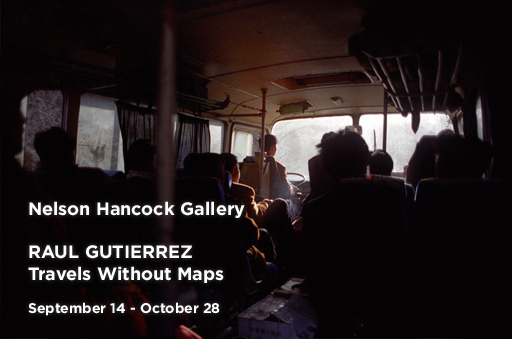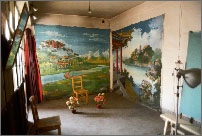January 8, 2019
Northern Cheyenne children and their playhouses
It's always hard to find vintage pictures of kids with their toys. I found this image from 1907 in the Library of Congress. This photo of Cheyenne girls playing displaying their dolls and doll-sized teepees is unusual in its casual empathy.
I wondered about the context of the image and found the photographer Julia Tuell was a young missionary assigned to the Lame Deer Agency in Montana. I haven't found a good complete archive of her photos, but many are striking in their intimacy such as this image of Cheyenne sun dance ceremony preparations. Scans of two of her photobooks can be found at the Buffalo Bill Center of the West: Julia Tuell 1, Julia Tuell 2. It's important to remember that adults in the community would have lived through Custer's massacres and were entering a period of bewildering change and oppression. Imagine the impression made by a Cheyenne-speaking white woman carrying a large Kodak camera.
May 1, 2013
Early Portraits of Native Americans
The Atlantic's InFocus blog features a set of extraordinary portraits of Native Americans. Many of images remind me of the faces, hairstyles, and ceremonial costumes of people I encountered in the far corners of Tibet in the late 90s.
April 11, 2013
The Weight of Objects
Photographer Ramsay de Give and editor/producer Kristen Joy Watts have a lovely project in The Weight of Objects which pairs portraits with pictures of treasured objects and text. We were lucky to have the kids photographed for this a few weeks ago. The Weight of Objects also features a super instagram feed that teases upcoming photos.
November 28, 2011
Ken Russell
The British director Ken Russell died yesterday. I never cared much for the films that gave him notoriety, but always found his photography striking. Like Kubrick he started as a photographer and made many notable images before turning to directing. He aspired to be a fashion photographer, but his documentary images are the ones with real meat. Only a few of this type of image can be found online (I've seen book of his work somewhere, but can't find a link),
A few image galleries: Ken Russell a Retrospective, Images for Sale, Ken Russell's Fabulous 50's.
Related: Kubrick's Photography: Overview, Chicago, New York.
October 26, 2011
Matt Eich's Sin and Salavation in Baptist Town
I'm late in discovering Matt Eich's project Sin and Salvation in Baptist Town but I recommend checking it out as he tells a powerful story. This is a long form project exploring Baptist Town, a troubled neighborhood of Greenwood, Mississippi. Eich talks about his work and gives it more context in blog posts (here and here), and in an interview with Joerg Colberg. More images from the project can be found on photoshelter.
October 5, 2011
New Tibetans
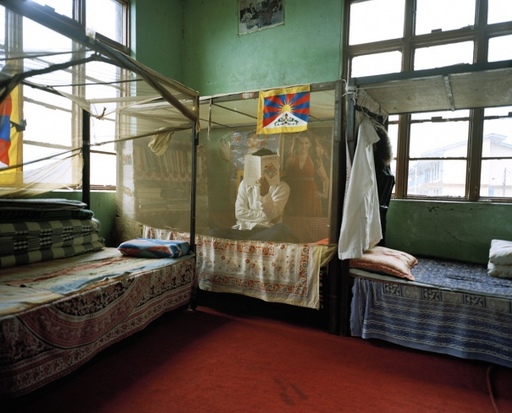
Check out this nice photo essay in Time's Lighbox by Sumit Dayal on Tibetans living in exile in India. It looks like much has changed in the 10 years since I last visited the area.
September 8, 2011
Charles Eisenmann
Charles Eisenmann was a Gilded Age photographer who focused almost exclusively on the people of the "living museums", carnivals, and sideshows of New York's Bowery district.
The Ronald G Becker Collection at Syracuse University holds over a thousand of Eisenmann's images. Online navigation of the archive is terrible, but well worth the work. (via Ephemeral New York)
July 11, 2011
Park Dongseok
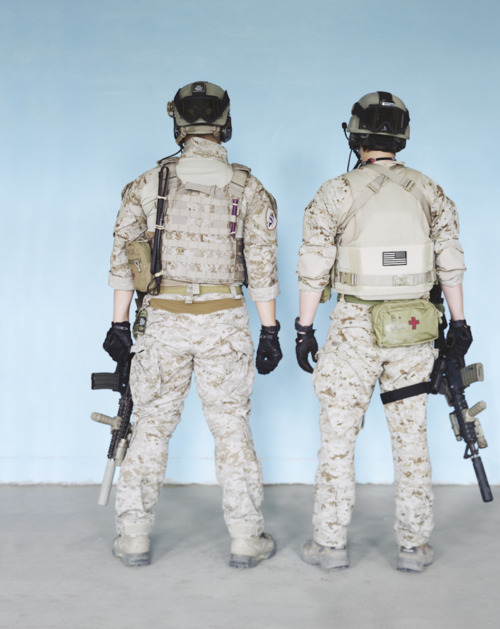
(via blink)
Not sure what the artist Park Dongseok wants to say here, but I found these portraits of Korean war gamers interesting and a little disorientating as they played on my (American) stereotypes of soldiers.
June 16, 2011
Nicolo Degiorgis
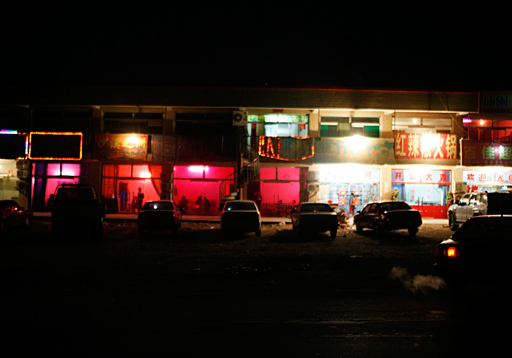
In his Oasis Hotel project Nicolo Degiorgis documents life on the Xinjiang highway that stretches across the Taklamakan. I've travelled the highway a few time and Degiorgis' project gives you a sense of the place. It's often grim. I wish more work was available. This feels more like the beginning of project than something that is fully realized. I hope more is coming...
May 27, 2011
Solargraphs
What's not to love about solargraphs—multi-week or month exposure images made by pointing pinhole cameras at the sky and recording the trails left by sun. I've always thought of solargraphs as portraits of time itself.
A Finnish student named Tarja Trygg sends pinhole cameras to "assistants" around the world. They record images and mail the cameras back for processing. Trygg has set up a solargraphy website to showcase the results. Some examples (from Alexandria, Egypt and Tijeras New Mexico respectively):
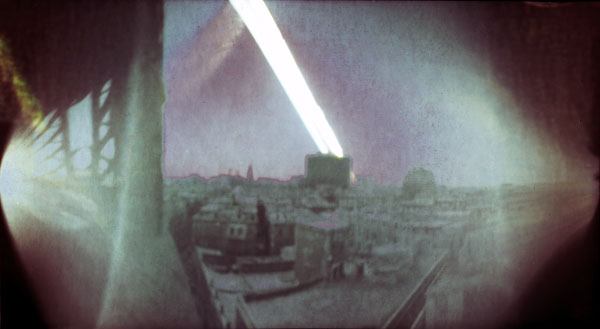
More solargraphy links: Becky Ramotowski's Castle Rock, flickr sologoraphs, Justin Quinnell's widely blogged solargraphs, Michael Wesely
May 6, 2011
Film Porn
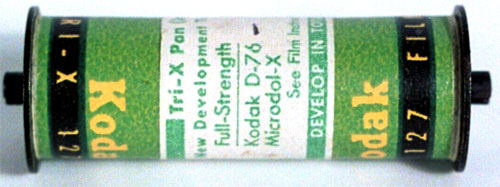
I was looking around for someone to develop 127 film today and came across Film Rescue a company specializing in old film stock development. Even better they've uploaded a huge flickr set of pictures of old film stock. Not pictures on old film stock, pictures of the rolls of film themselves. It's a litmus test of your film geekiness. Double thumbs up over here.
Related: Film Box Group
April 12, 2011
Edible Selby
A few years ago Todd Selby photographed scores of creative people in their work spaces for the project The Selby Is in Your Place. Now he's back photographing the people making modern food culture and their workspaces with Edible Selby. I predict this project will be just as popular as the first. To use an overused term, it's a visual feast.
April 11, 2011
Robert Polidori
Robert Polidori's Yemen pictures from a 1996 assignment are interesting, but are presented very very small and without much context. Come on New Yorker! Bigger pictures! More words!
Poliodori did not know what was going on in the image above. And anyone who has travelled far away knows the phenomenon of the strange child vagabond, who appears, watches, and vanishes. The blackface must have some significance. Do any of the readers here have any idea? The only reference I could find online this one which seemed to be about another custom.
Polidori is known for popular coffee table book architectural projects covering Versailles, Havana, Chernobyl etc... but I much prefer this looser style of work from Yemen. Where can we see more?
April 7, 2011
The Liljenquist Family Collection of Civil War Photographs
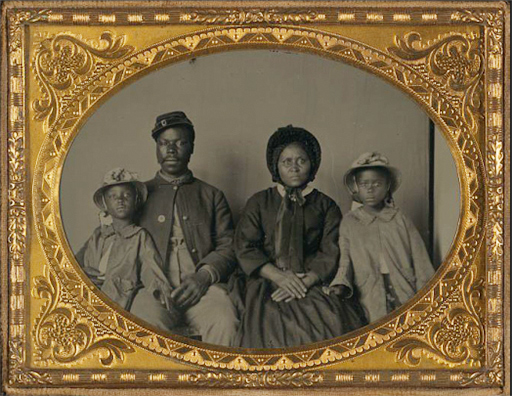
The Library of Congress is featuring a large collection of over 300 Civil War ambrotypes and tintypes. They're beautiful, especially at high resolution—and the Library has included high resolution downloads for almost every image, with more variety than I've ever seen in one place. Always be sure to read the captions. Many are heartbreaking and the words tend to fold the distance between the 1860's and today.
A flash slideshow of a few curators picks can be found here, but the best way to view the pictures is to just dive in.
March 29, 2011
Jasper, Texas: The Community Photographs of Alonzo Jordan
Jasper, Cleveland, Vidor — they're all East Texas towns you drive through on the way from somewhere to somewhere. They're towns of mobile homes, wood framed houses, small churches, and barber shops. They're not places you notice. But now each of these places is synonymous with the horrible things that happened there. I grew up in this part of the country and the news about the rape Cleveland was particularly unsettling because I felt as if I was reading about people I might have known in school. The last names, the scenery, the house where bad things happen, all are familiar archetypes from an East Texas childhood. In my town there was a building called The Front. Everyone knew bad things happened there. Nobody talked about it. I imagine this was something similar. The details of this case are shocking. 19 men ages 14-29. An 11 year old girl. Rapes over three months. The inclination in the community will be "take care" of this situation and forget about it, to blame the devil, and to protect themselves from the darkness around the case. You can already see this happening in the news coverage. My hope is that the case will force people to ask questions... just maybe, the right questions will help shine light into this community and ask how this could happen. There will be no easy answers.
Perhaps because of all this, I've been thinking about a show at the International Center for Photography titled Jasper, Texas: The Community Photographs of Alonzo Jordan. It's a loving portrait of people in Jasper but it could easily be a portrait of folks in Cleveland or Livingston, or Woodville, or any of the other small communities in East Texas. If you are in New York, it's worth visiting and it's worth asking yourself when you look at the images how these communities get from where they were then to where they are now.
p.s. Speaking of the IFC they have another show up on rural baptism rituals that looks pretty amazing. It's titled Take Me to the Water. I hope to see it soon.
January 7, 2011
Sydney Police Photography
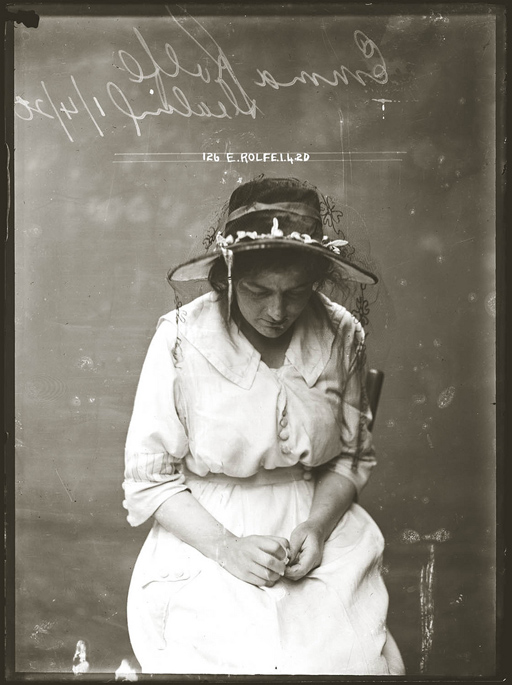
This set of photographs from the the Sydney Police Department collected on the French visual culture site La Boite Verte is pretty astounding, I was reminded that Alec Soth showcased the same archive a few few years ago in a blog post titled Why Bother?.
I finally dug through the original archive myself at the The Historic Houses Trust site today. It's well worth the visit. The site allows download of full resolution versions of the images and provides context. Many of the descriptions are like that famous 6 word Hemingway short, "For sale: baby shoes, never worn."
"Child unknown, found wandering at large.""Eugenia Falleni, alias Harry Crawford, special photograph number 234"
More images to whet your appetite:
October 26, 2010
Pixy
Love this image by Pixy. It doesn't appear to be part of a project yet, but looks like it might be soon:
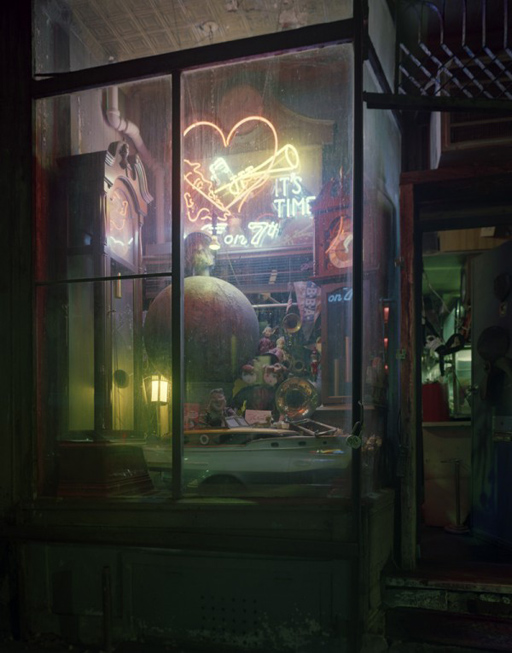
She has many websites: Personal, Pro, Blog
September 28, 2010
Sotheby's Photography Auction Catalog
Sometimes just to torture myself I'll browse the Sotheby's Auction Catalog (registration required)... painful, but fun.
I'm a sucker for any images from Sally Mann's Mother Land series:
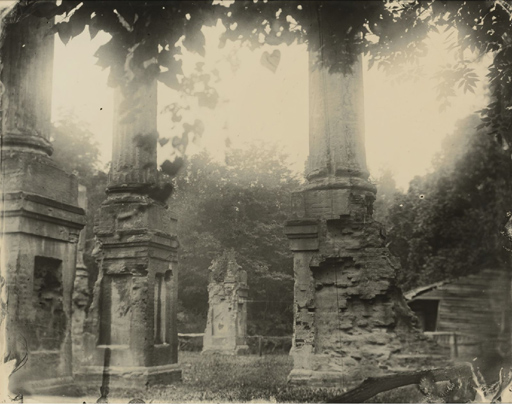
This one is called Untitled (Deep South #9) and man would it look nice in the bedroom.
Don't know the series? Read these reviews/posts: Indy Week, Musings, Arts Central,
July 31, 2010
David Leventi
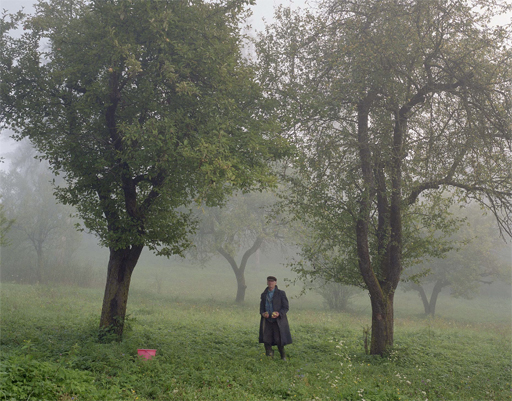
Someone mentioned David Leventi's photography of opera houses to me, so I looked up the site. The opera houses didn't do much for me (architectural photography rarely gets me out of bed), but I really enjoyed his portfolio of Romania images which he titles Romania Revisited. In his statement he writes,
"Romania Revisited retraces my great-grandfather’s footsteps into an unexpected past. Based on stories told by my father and grandmother, I traveled to Romania with a 4x5” large format view camera, collecting lost memories on a journey through a country now struggling to put behind it a lifespan of tyranny, while all the best and brightest who dared or were able to left."
June 8, 2010
Retratos Pintado
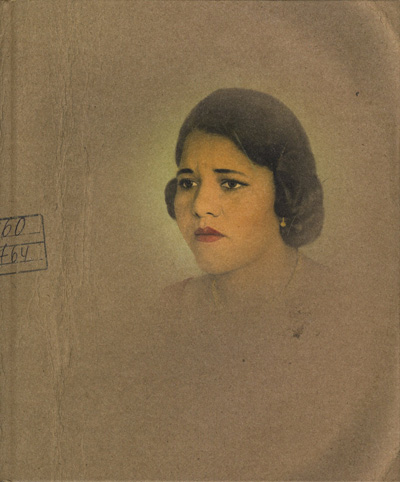
I'm excited about a show opening in a few weeks at Yossi Milo titled Retratos Pintados. It's an exhibit hand-painted Brazilian vernacular photographs from the collection of Titus Riedl. My grandparents in Mexico had photos like these around the house and I've always loved the form. A book with the same title with 60 some odd images was just released by Nazraeli Press. The forward is by Martin Parr. He writes in the intro:
"Nothing has stopped me in my tracks more than when I was first introduced to a set of images collected by Titus Riedl, while attending a Latin American photo forum in São Paulo. If you visit a house in the northeast of Brazil, you are very likely to see a photo painting on the wall. This is a tradition that dates back many years, when a black and white image was not deemed exciting enough. Painted photos are a way of bestowing status on members of your family (both dead and alive) and giving them an iconic, almost saint-like look. When the roving dealers visited these houses, in search of commissions, they were able to facilitate any dream. They could bring back the dead, dress you in expensive clothes and jewellery, make you look years younger. Although these images are still produced, they are now more likely to be computer-generated rather than hand-painted. As I was keen to see the last of these artists in action, Titus decided to arrange an introduction. We went to my hotel room and made the edit that you see here. As another analogue tradition dies, we offer the portraits in this book as a testament to a most remarkable method of creating portraits. Let the dream live on."
The book is definitely high on my wishlist and the show is marked MUST NOT FORGET on my calendar.
RELATED: Who We Were, Photostudio Vernacular, H C Anderson's Greenville Mississippi, Romualdo Garcia, Philip Kwame Apagya, Seydou Keita
June 3, 2010
Pao Houa Her
Pao Houa Her is a Hmong refugee who is studying in the Yale Graduate program for photography. Her website features a project titled Coming of the Metal Bird which is simultaneously familiar and odd. Describing the project, she writes, "A great big silver metal bird carried my family from Thailand in 1987 into the cold tundra of Minnesota. We arrived at a small cramped studio apartment which was to be our home. Inside the apartment was a green triangle shaped tree with lights that lit up in differnet shades of greens, yellows, blues and reds. Our sponsor had told us that Christmas was coming...." Read More
May 18, 2010
Carlo Gianferro
I became aware of Carlo Gianferro's work through his African Interiors series. Don't know how I missed his Roma Interiors series. Brings to mind the characters of one of my favorite films, Black Cat, White Cat (oddly only available on Region 2 DVD or VHS).
March 28, 2010
VIVIAN MAIER
A few months ago photographer John Maloof discovered a huge cache of photographs and negatives (many unprocessed) by an unknown Chicago photographer named Vivian Maier. It was an incredible find and a great story. I've been following along ever since and eagerly look forward to John's updates of Maier's work. A few recently rediscovered images:



Want learn more about the photographer? She now has a wikipedia page.
February 14, 2010
Interview with Hiroh Kikai on Eyecurious
A few years ago on lensculture Marc Feustel posted excerpts of an interview with the great Hiroh Kikai. This week Feustel finally posted a fuller version of the interview. If you're a Hiroh Kikai fan (and how could you not be?), please click over there.
If you don't own Hiroh Kikai's book Asakusa Portraits and you're reading this blog, well, you probably should.
January 5, 2010
David Shrigley
 Black Snoman by David Shrigley
Black Snoman by David Shrigley
David Shrigley is a talented artists, cartoonist, and animator, but of all his talents I love his photos the most..
December 28, 2009
Samantha Contis
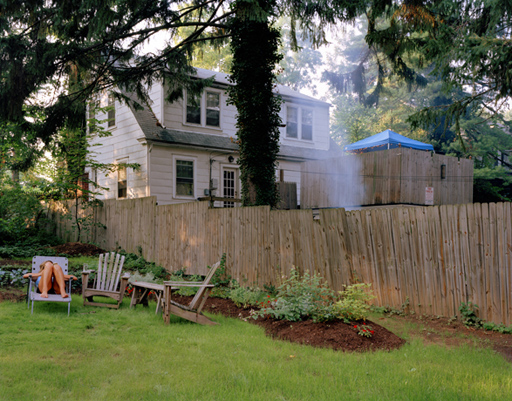
I'm intrigued by Samantha Contis' project Between Rivers and Roads but wish I had a bit more context for it. Then again, I feel that way about most work I look at online and of course viewing work online is a poor substitute for seeing it in person. Bet this series is beautiful as a set of prints.
December 23, 2009
Alejandro Cartagena
Congratulations to Alejandro Cartagena for being selected as a Hot Shot. I've long been been a fan of Cartagena's Lost Rivers project and of his work in and around Monterrey. The image above is actually from a new project titled Between Borders. It's great to see Cartagena on a roll. Hey! Hot Shot is on roll too. Two former Hot Shots were selected for the Whitney Biennial, a very big deal indeed.
October 1, 2009
Gerda Taro
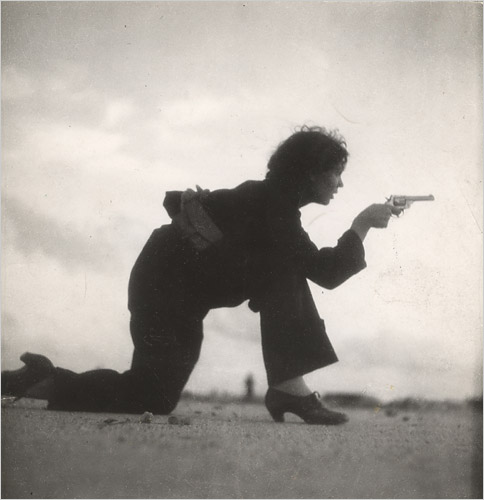
Don't know why I it took me a year to discover a link to this Gerda Tara show, but I was totally wowed by the work of this photographer I knew very little about. She was Robert Capa's collaborator/girlfriend and they worked together for only two years before she was killed in the Spanish Civil War just shy of her 27th birthday.
More of Taro's story on Wikipedia
Related: The Mexican Suitcase
August 28, 2009
Allie Mount
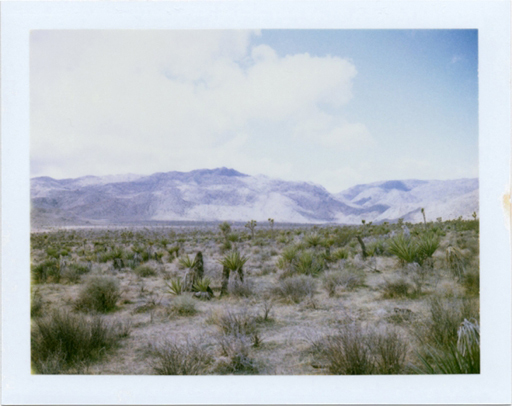
I have a weakness for western landscapes perhaps born of childhood of 16 hour drives between Texas and Mexico. This was the era before parents used car seats or seat belts and we would turn the back of the station wagon into private forts padded with sleeping bags and stocked with binoculars, Hardy Boys, and flashlights (the flashlights were for shining out the window at night). In my memory of those journeys, after the initial excitement of the trip had worn off, and after we had counted our 100th Volkswagen Beetle and spied everything we were going to spy with our purple eyes, my brothers would always lie down staring out the back window engrossed in endless debate about the nature of things whereas I would gravitate to the window obsessing over flashes of light, large marooned rocks, strange trees, and lone figures out in the distance. I don't remember ever getting tired of that rolling view and even today a long western drive nowhere is one my my favorite things in the world.
Many of Allie Mount's polaroid projects work for me as visual mnemonics allowing me to trace backwards in time to that view from the station wagon window and for this I am grateful.
July 8, 2009
Edgar Martins
There's quite a kerfuffle brewing about Edgar Martins photoshopping some an image for a story in the NYTimes.
Specifically he mirrored an image to create symmetry and then changed a few things in photoshop to cover his tracks.
This is a story because Martins states emphatically that he does not use photoshop (or other "darkroom manipulations") and because he apparently duped the Times (he should have labeled the picture an editorial illustration rather than editorial photojournalism). I find the whole thing amusing because there are many images Martin's portfolio that are obviously photoshopped using exactly the same technique.
This is easily provable on a suspect image simply by taking half the image, flipping it horizontally and layering it over the other side of the image with say 80% opacity... At that point it's obvious which parts of the image are flipped and which parts are photoshopped in.
Here are two more examples of his work that easily debunk his "no photoshop" proclamation:
For the record, I like Martin's work, and I'm not anti-photoshop (and I'm certainly not anti-darkroom work) but I am anti-hypocrisy.
June 24, 2009
Editions at 20x200
We released 4 editions today from yours truly on 20x200... All are from my project Travels Without Maps. Many of you have asked for small affordable prints, and now they are yours for the taking.
Additionally, I've seriously revamped my portfolio site and have now made it easier to grab big prints there. I have several new projects waiting in the wings will be putting them online in the coming weeks, so stay tuned, things are afoot!
May 12, 2009
John Thomson
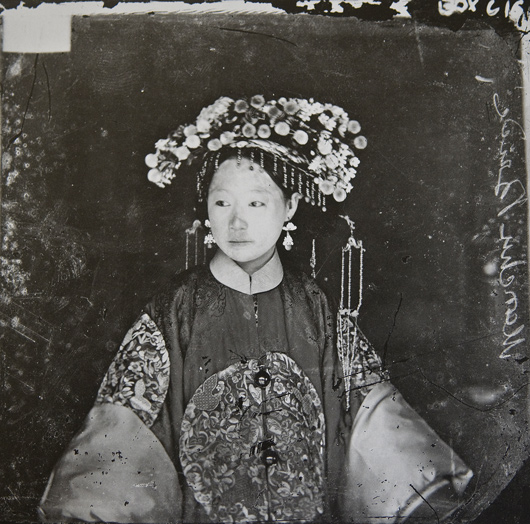
Don't know if I have many readers left in Beijing, but if so, be sure to head over to the Beijing World Art Museum to check out an exhibition of work by Scottish photographer John Thomson, one of those great intrepid 19th century traveling photographers. Many of the 150+ images in the exhibition have never been shown before... Go if only to see pictures of old Beijing. Wish I could go see the show in person or at least look at more images online.
More Images: Portfolio 1, Portfolio 2, and many more hidden out there on google image search.
May 5, 2009
Philippe Halsman on jumping
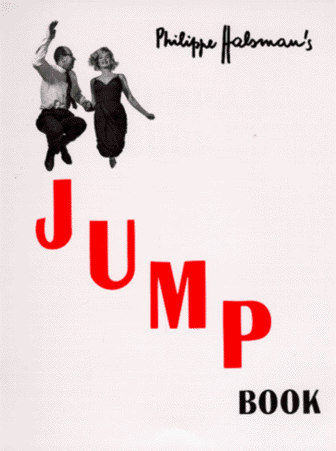
This is a lightly edited passage from Philippe Halsman's classic Jump Book which was published in 1959 and dedicated "To my subjects who defied gravity".
Then came the crisis which changed everything. I was commissioned by the Ford Company to photograph for its fiftieth birthday, the entire Ford family...There was the charming matriarch of one of the great American families, and suddenly, like a pang, I felt the burning desire to photograph her jumping.
'Are you going mad, Halsman?' I asked myself. "Will you propose that she jump—a grandmother and an owner of innumerable millions of dollars?"
I asked Mrs. Edsel Ford, "May I take a picture of you jumping?"
I have never seen an expression of greater astonishment. "You want me to jump with my high heels?" she asked incredulously.
I explained that it was not obligatory. Mrs. Edsel Ford asked her children to excuse her and went with me to the hall. She took her shoes off and jumped gracefully a couple of times. Suddenly I heard the voice of Mrs. Henry Ford behid me: "May I also jump for you, Philippe?"
A year and a half later I was telling René, my brother-in-law, that I already had a collection of sixty famous jumps and that I had not met with a refusal. René who is hopelessly French answered, "America is a young nation. Inside every American is an adolescent. But try to ask a Frenchman to jump. Il te rira ua nez - he will laugh into your nose!"
The following week I had to photograph a French writer, Romain Gary, for his book jacket. Gary jumped for me several times. His jumps were both romantic and heroic. It looked as though, in mid-air he was offering his chest to enemy bullets. After the sixth jump I closed my camera. Gary asked, "May I please jump once more? I don't think I have expressed myself completely."
Vaguely Related: Bounce
March 27, 2009
Nadia Sablin
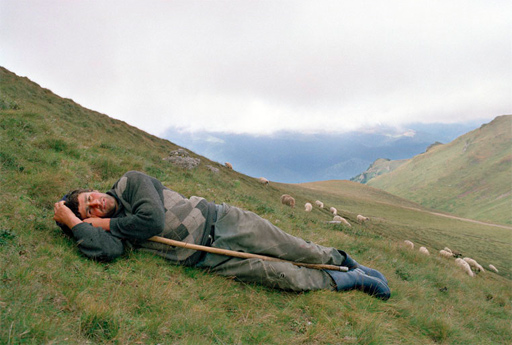
I don't know if she's recently updated her website, but the volume of Nadia Sablin's online output seems to grown significantly since I last checked in. I first encountered Sablin's work a few years ago via Hey Hot Shot, and had always found her portraiture compelling while simultaneously having the desire to make radically different edits of the work she presents... Of course wanting to make different edits of other people's is my general state of being (so much easier than editing your own!)... Sablin is a Russian expatriate who has lived in the US since she was 12.
February 27, 2009
Ellen Carey
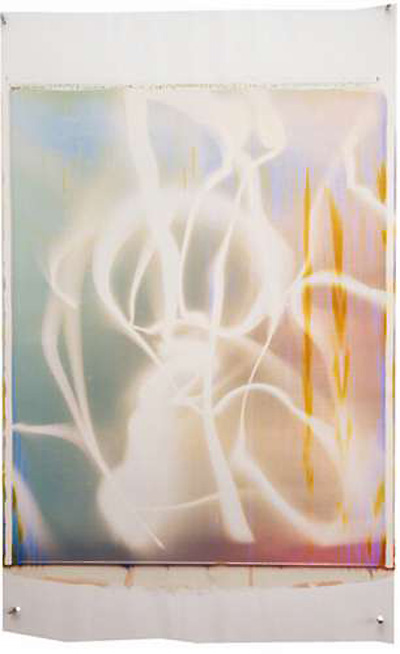
While I rarely link to purely abstract photography, I appreciate the difficulty of creating abstract images. In many ways, especially in photography, creating meaningful abstraction (minimalism also), is a more difficult than creating traditional images.
I recently saw one of Ellen Carey's "Polaroid Pulls" and was struck by her work's lushness, resonance (her process echos some of the very first experiments in photography) and irony (especially now that Polaroid is fading out of existence and chemistry is being replaced with pixels and bits).
Links: A nice online exhibition of Carey's work., Carey's Website,
February 16, 2009
Rusyns - Lost Homes
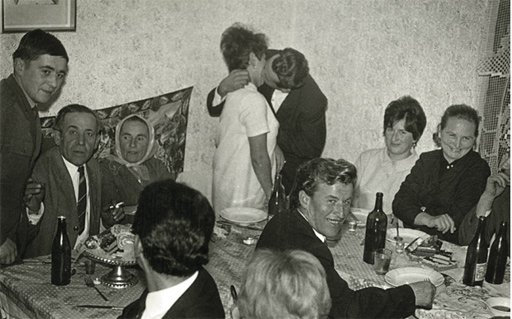
I know I'm late to the game in pointing out a project by Lucia Nimcová titled Rusyns: Lost Homes which documents an obscure Slovakian minority who were displaced when a dam was built and their villages inundated, but it's nicely done project and worth checking out if you haven't seen it. I only wish there were more photographers and more connections between images/maps/audio etc....
February 4, 2009
Mark Ruwedel
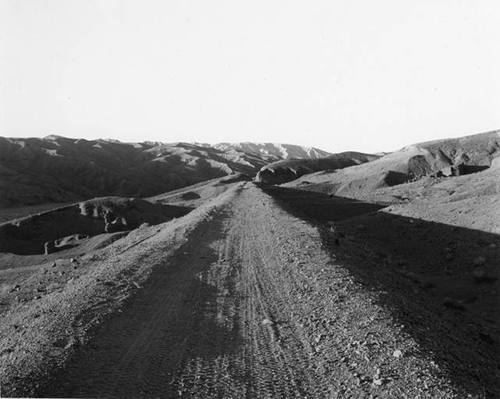
It would be hard not for me to love Mark Ruwedel's evocatively titled new show Westward the Course of Empire in which Ruwedel photographed the sites of abandoned railway lines in the American and Canadian West. It opens tomorrow at the Yossi Milo Gallery. This new series jibes nicely with Ruwedel's Earthworks portfolio in which he documented the mark of man on the earth (shooting burial mounds, old footpaths, earth art etc), and the effect of time on those marks.
February 2, 2009
Thobias Fäldt
 Some photographers have stories to tell, some find stories to tell, and some, I think, have internal compasses that are a few degrees off the norm, and are able to create stories, or at least the beginnings of stories, wherever they point their cameras, suggesting narratives, but never finishing them. Thobias Fäldt, a Swedish photographer, is in that last category. His images might not hold together as projects but individually all invite questions and are recognizable as the work an appealing, often humorous, off kilter vision. Fäldt's website is maddeningly obtuse, but contains many gems like the image above, titled White Visitor.
Some photographers have stories to tell, some find stories to tell, and some, I think, have internal compasses that are a few degrees off the norm, and are able to create stories, or at least the beginnings of stories, wherever they point their cameras, suggesting narratives, but never finishing them. Thobias Fäldt, a Swedish photographer, is in that last category. His images might not hold together as projects but individually all invite questions and are recognizable as the work an appealing, often humorous, off kilter vision. Fäldt's website is maddeningly obtuse, but contains many gems like the image above, titled White Visitor.
January 21, 2009
Jan 20th, 2009
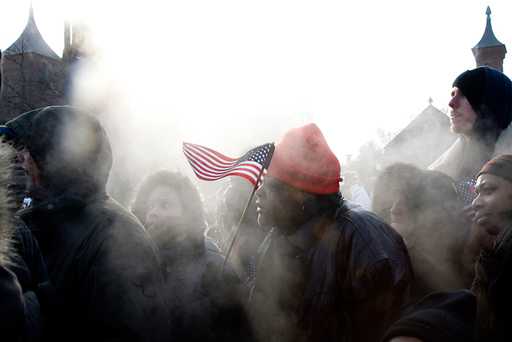
I was looking around for a picture that summarized the inauguration for me when as if by telekinesis I received an email from photographer Rachel Feierman with the above image attached. I hope she posts more from the inauguration in her Politics series...
Related: Rachel Hope Feierman
January 14, 2009
Patrick O'Dell
One of the great pleasures in life is jumping into a car and just driving for a couple of days or weeks with no particular destination in mind.
I don't know the story behind Patrick O'Dell's Natives (shot for Vice Magazine), but I'm guessing he hopped into a car and ended up on a reservation somewhere way out west. Feels exactly right and I like it because of that.
The rest of the portfolio can be found here.
December 5, 2008
Abelardo Morell
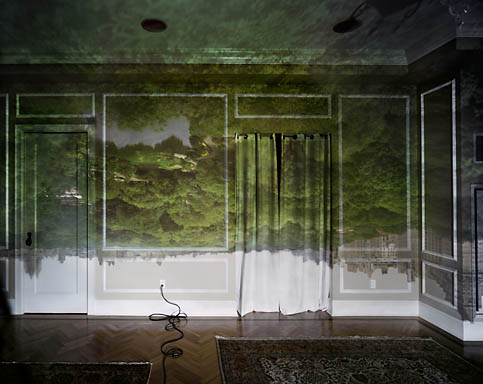
Perennial Heading East favorite Abelardo Morell is showing at the Bonni Benrubi Gallery this weekend with large 50"x60" prints of his camera obscura work. It's certainly worth the trip uptown.
Related: Pinhole Camera Art Project, A Natural Camera Obscura in India, Car Camera Obscura, A camera so big you have to get inside...
December 3, 2008
Stuck in a Strange Loop
I like Joel Barhamand's series Stuck in a Strange Loop, because who among us has not at some point been stuck in a strange loop.
November 29, 2008
The Garden
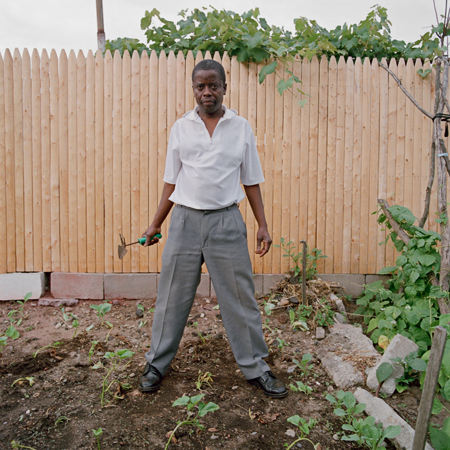
Today's kimchi making by my wife's mom and recent New Yorker article about a Hangzhow restauranteur who serves local/organic dishes (a minor miracle in modern China), spurred a long conversation tonight between my wife and myself about the practical difficulty of eating locally grown organic food, the lost culinary worlds of our childhoods, and the messiness of milking cows. (In her ideal future world for us, Jenn would own a cow and make butter by hand. She would also keep chickens for eggs — she almost convinced me to buy chickens when we were in LA, but I owned a chicken as a child as wasn't convinced.)
Anyway, the conversation led me to search for a photographer who's name has escaped me and whose site I ultimately did not find who has super portfolio of photos of the English and their kitchen gardens. Instead, I discovered Lucas Foglia, a Yale MFA student, who has a nice portfolio of images taken in and around the Somerset Community Garden in Rhode Island. What is extraordinary to me about these pictures is that taken individually you might have guessed they had been taken in Cambodia, Africa, Eastern Europe, The American South etcetera, almost anywhere but Rhode Island.
Also be sure to check out Foglia's series Re-Wilding covering families who have rejected modern society and have decided to live off the grid.
November 17, 2008
Eggleston at the Whitney Roundup
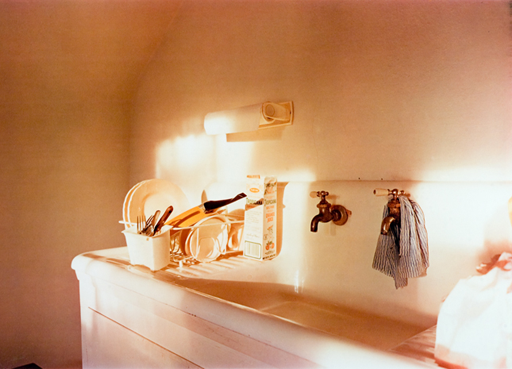
It will not be news to the photo minded readers of this blog that William Eggleston has finally been officially been canonized with a full blown retrospective (William Eggleston: Democratic Camera, Photographs and Video, 1961-2008).
The reviews of the show are mainly fairly dull lionizations (Reviews: New York Times, The New York Observer, New York Magazine, The New Yorker, Time Magazine, W, and The Herald Tribune). Most of the reviewers seem to struggle to find something interesting to say about the man. The subtext for me is that the work is so obviously sublime that there's not much to say...
To get an idea of how far our collective taste has come, it's instructive (and fun) to read a NYTimes review of Eggleston's first show at the MOMA. Hilton Kramer writing in 1976 seemed positively offended. And of course in retrospect the article is not only a reminder of how shocking Eggleston's work was in historical context but of the courageousness curatorial brilliance of John Szarkowski.
The entire review can be downloaded here (Times id required).
A few choice excerpts:
It starts:
'Historic breakthroughs are not, alas what they used to be — at least in the world of art.''Mr Szarkowski throws all caution to the winds and speaks of Mr. Eggleston's pictures as "perfect".
Perfect? Perfectly banal, perhaps. Perfectly boring, certainly. A perfect example of what, for Mr. Szarkowski and many like-mined connoisseurs of contemporary photography, is now à la mode, But this is not, of course, what Mr. Szarkowski means by "perfect." He means that Mr. Eggleston's pictures achieve a rare degree of excellence and originality, and that—to put the matter mildly—is something about which opinions will differ.'
'That bathroom shower is an index to the kind of subject Mr. Eggleston favors. He likes trucks, cars, tricycles unremarkable suburban houses and dreary landscapes too, and he especially likes his family and friends, who may, for all I know be wonderful people, who who appear in these pictures as dismal figures inhabiting a commonplace world of little visual interest.'
'To this snapshot style, Mr. Eggleston has added some effects borrowed from recent developments in, of all things, photorealist painting—a case, if not of the blind leading the blind, at least of the banal leading the banal...'
--
update: Youngna shares an amusing (if creepy) anecdote about meeting Eggleston last year.
November 8, 2008
Who We Were
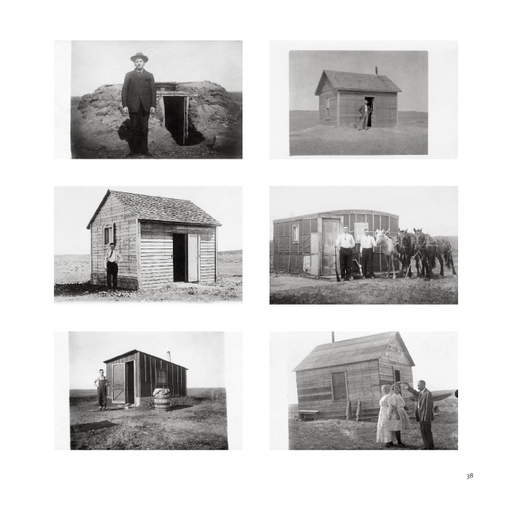
The guys behind Square America, a site that collects and curates vernacular photography, have put together a super book called Who We Were: A Snapshot History of America. The book displays the humble photographs with great respect (generally one per page), at close to actual size. Snapshots are often accompanied by bits of text written on their backs. The combinations are sometimes mysterious, often poetic, occasionally tragic—tiny puzzle stories.
While the photographers in Who We Were are mainly anonymous, photographs sometimes appear to be naive echos of well known images by Man Ray, Dorothea Lang, Frielander, Eggleston, etcetera... Books like this can feel scattershot, but the sharp curatorial team behind this collection have culled through countless images to create a thought provoking volume I'll definitely be returning to again and again.
August 25, 2008
DoDo Jin Ming
My grandmother had a painting of the sea in her dining room. The canvas depicted a violent sea at night. It was painted by an aunt and was both totally amateurish and utterly compelling. I can't tell you how many times I drowned myself in those waves. It was a scene not unlike the one below by Willem van de Velde (the great Dutch painter of the sea) or of the seascapes of countless artists, known and unknown, who have tackled versions of the same theme - a dramatic sea, threatening clouds, nature unfurled.
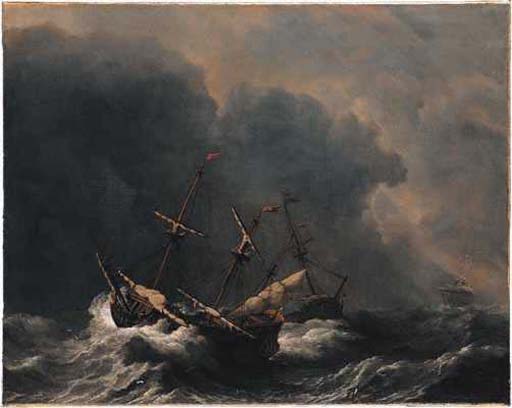
Photographers of course even at the birth of the medium were photographing the sea.
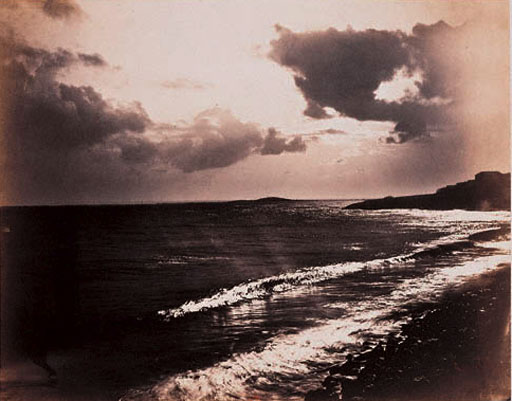
Gustave LeGray was out photographing the sea a few years after photography was invented and (I believe) was trying to recreate the drama of canvases of the great Romantic seascape painters of his day, artists such as Frederic Edwin Church,William Turner, and Winslow Homer. But LeGray was faced with a problem. If he properly exposed for the ocean, the sky would be blown out to white. And if he exposed for the sky, the ocean would be an underexposed featureless black so he pioneered a technique of double printing sky and sea from two negatives and 150 years later he is remembered for his seascapes (his work sells for hundreds of thousands of dollars).
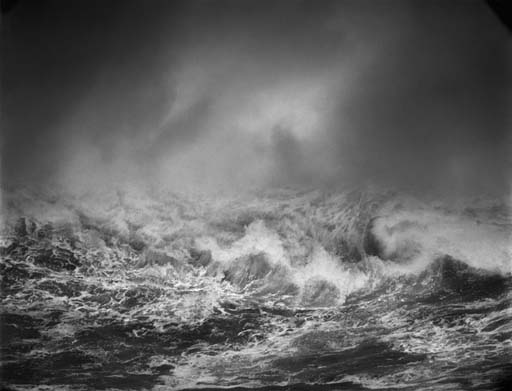
The photographer DoDo Jin Ming is obviously steeped in all these traditions and by using vintage techniques similar to LeGray's (printing sea and sky from separate properly exposed negatives onto one image) and by managing to have herself placed almost directly within the maelstrom of crashing waves (often lowered by rope from rocky cliffs) she's managed to capture what some of the great seascape painters imagined while looking down into the froth from the safely of the cliffs above. In doing this, she manages to elevate this most banal of subject matter into something sublime.
Amazon UK has a copy of her book available. Doesn't seem to be available in the states.
August 8, 2008
Denis Dailleux update
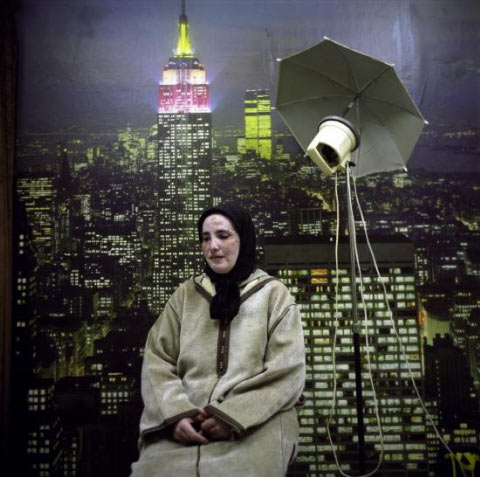
I pointed to Denis Dailleux's Cairo work last year. I'm happy to report that this excellent photographer now has a new website with many more bodies of work online. If these images don't inspire deep wanderlust, well, you just don't have wanderlust.
Last Year's Entry: Cairo
July 28, 2008
RFK coda
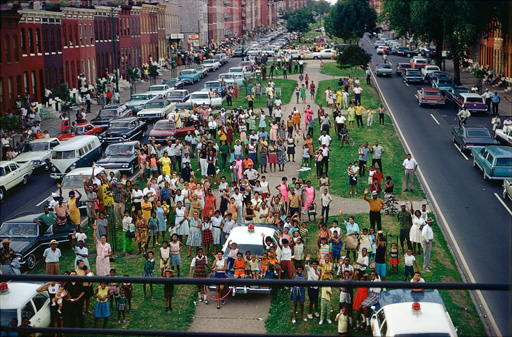 Untitled (Baltimore) by Paul Fusco
Untitled (Baltimore) by Paul Fusco
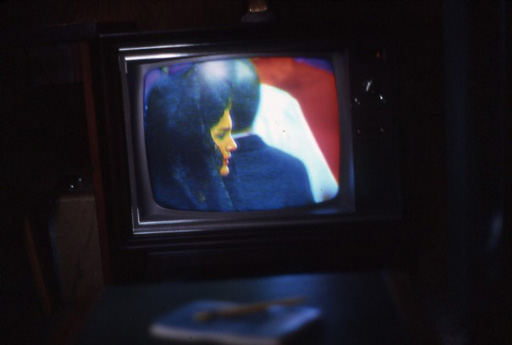 by Martin Johnson
by Martin Johnson
As sort a quiet coda to Paul Fusco's profoundly moving RFK Funeral Train Exhibition which closes this week at Danziger Projects, Square America (a photographic ephemera site) released a set of found pictures of RFK's funeral as seen on television which the the site has titled What Was On (June 1968). I was one year old in 1968 but the pictures evoke images of my childhood living rooms, some of my first memories. Both sets of pictures in very different ways evoke the emotion of that year and need of the photographers to hold on to those emotions.
If you didn't get a chance to see the Fusco exhibition first hand, Aperture is re-releasing an expanded version of his book. It is available for pre-order. I can't wait for mine to arrive. The Square America guys are releasing their own book titled "Who We Were: A Snapshot History Of America", no pre-release link yet.
July 18, 2008
George Eastman House Autochrome Collection
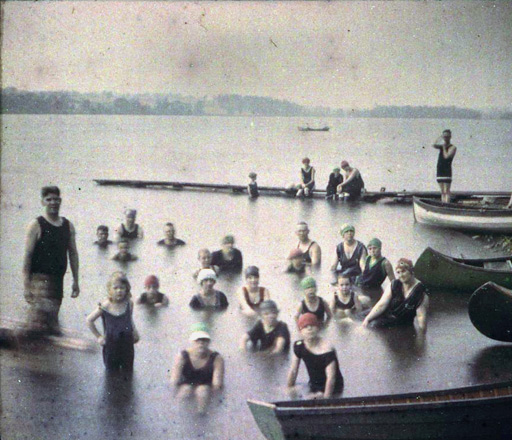
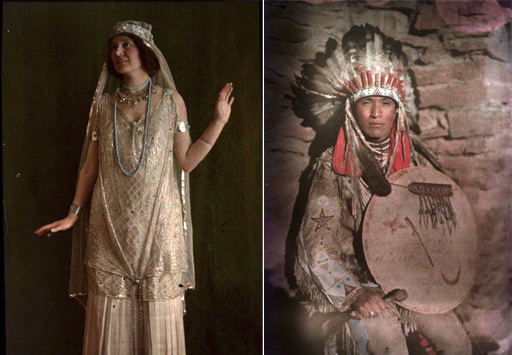
The George Eastman House has joined the flickr commons and has included a set of early 20th Century autochromes which have been a source of fascination and inspiration for years.
Flickr Commons is a fantastic idea. My wish is that the whole thing could be taken further. Imagine an open source version of flickr dedicated to showing artwork and photography from public institutions in which users had the opportunity to contribute scholarly work or to group images into collections.
Note I did a quick and dirty color correction to the images I've posted above.
Related: Early Color Photography
July 6, 2008
Adrien Missika
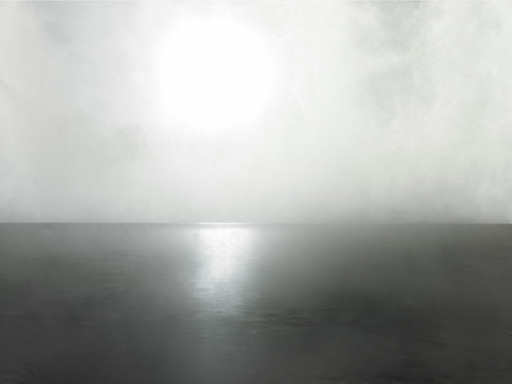
Adrien Missika's portfolios hold many haunting landscapes both real and created as well a few super looking limited editions books (Less interesting are the portfolios of natural history museum-like backdrops which have become the new parking garages of photography). I like that Missika prints small as I'm a fan of the intimacy of small prints, but some of these would be spectacular large. No? (via Ned in Toronto who wrote, "You are going to love this guy.")
Related: Oceanscapes
July 3, 2008
Hin Chua
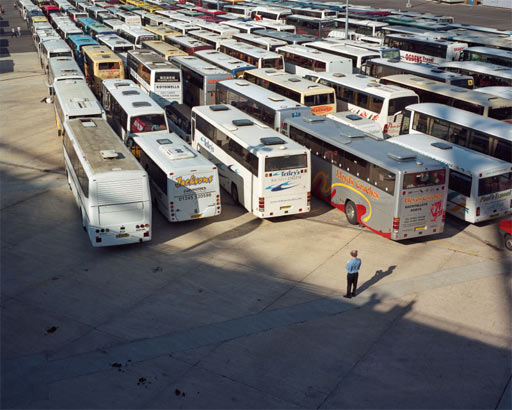
While not all the images in the series work for me, I admire the ambition that goes behind a series with a title as grandiose as After the Fall. And many of the individual images do speak to me. I wish more photographers would try tackling such projects of impossible scale. Chua is Malaysian by birth and is currently based in London.
June 27, 2008
Carolyn Drake
2008 Lange Taylor Prize winner Carolyn Drake has been making beautiful photography all around Central Asia which is my favorite part of the world. Her pictures like no others I've seen from the area evoke the sights, sounds, and smells of the region.
May 31, 2008
Thomas Holton and the Lams of Ludlow Street
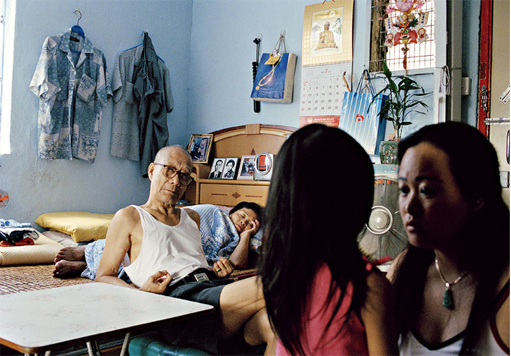
I don't buy into the whole idea of universality — the popular "it's a small world after all" belief that if you scratch the surface a bit we're all just plain folk who are the same underneath. Our culture, our families and our unique quirks mold our worlds and define the physics around which our lives revolve often blinding us to other worlds that exist beside us. I enjoy the work of artists who expose the intersections and rifts between worlds allowing us to peek into the unknowable territory that marks the boundaries of other people's lives. This is what Thomas Holton's The Lams of Ludlow Street does for me.
April 18, 2008
Square America's Book of Sleep
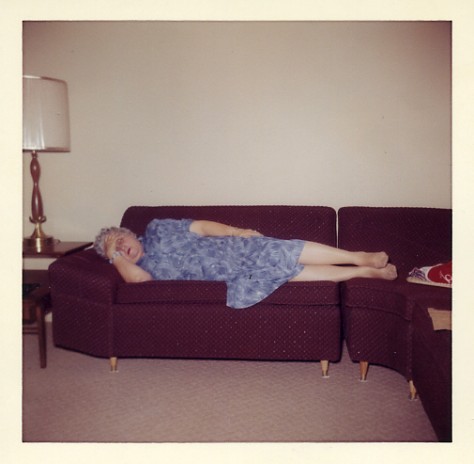
I love taking pictures of people asleep. In sleeping children we see their futures. In adults we see their childhoods. We relax. Our waking masks lowered, we become truer versions of ourselves.
The image above is from the site Square America which collects vernacular photography and has posted a wonderful collection of vintage photos of people sleeping. Check them out.
March 31, 2008
Editing
The impact of changing the order of a sequence of images always surpises me. I was looking around for work by Yola Monakhov after seeing a photograph of hers in Harpers and found two sites that featured sets of her images. Both sites present the images in a similar manner and the images mainly overlap... The first series is presented on her gallery's site and the second series is presented on her personal site. I read the images on the gallery site as a journey going from Point A to Point B (The captions distract from this but I didn't read those until later), they work as a group for me whereas in the personal site edit I couldn't find the throughline and was forced to consider the images as individual pieces.
Unrelated but gripping: Ms. Monakhov's account of being shot while working in the West Bank.
March 20, 2008
Ian Baguskas and Mark Marchesi
It might be a little bit of inside baseball recommending shows being put on by my business partner and my gallerist, but darnit, both are worth seeing. Both shows are composed primarily of landscape photography, both are by photographers that speak in quiet voices, and both photographers happen to be super nice guys in person.
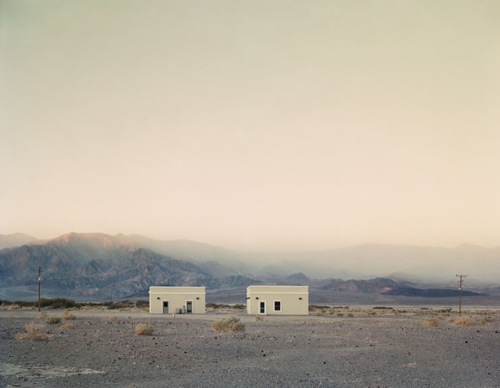
So go see Sweet Water by Ian Baguskas at the Jen Bekman Gallery. It opens on Friday and runs through the end of April (Ian was just included in the PDN 30 btw).
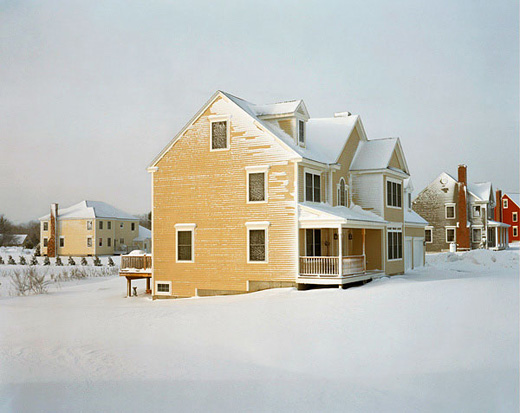
Then hop on the F and go see The Town and the City by Mark Marchesi at the Nelson Hancock Gallery in Dumbo. It opened last week and also runs through the end of April.
February 17, 2008
Leonie Purchas
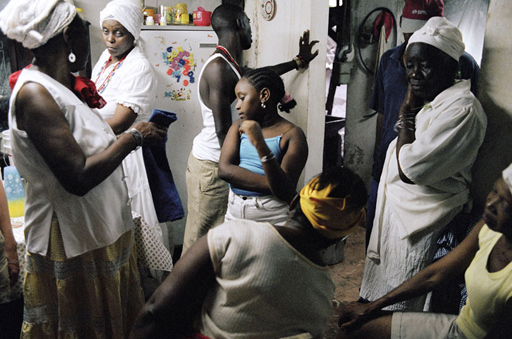
Leonie Purchas' In The Family project is full of the type of photography that gets me out of bed in the morning- intimate, revealing, and true with the occassional punch in the solar plexus to leave you totally gobsmacked.
February 3, 2008
African-American Portraits & Snapshots
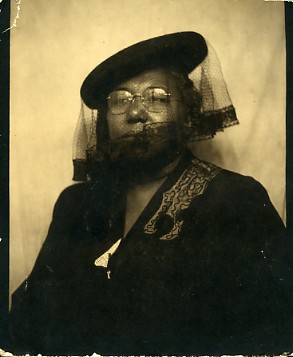
One of my favorite blogs, Square America, has posted an online show titled African-American Portraits & Snapshots, a collection of 160 photographs taken between 1900 to 1975 (several home movies are also included). It's a rich and varied collection that I hope gets put into book form some day. Note the site takes a few seconds to load and the site curator Nicholas Osborn mentioned he's still tweaking the layout, so things might change in a day or two.
January 26, 2008
Robert Capa's Lost Negatives
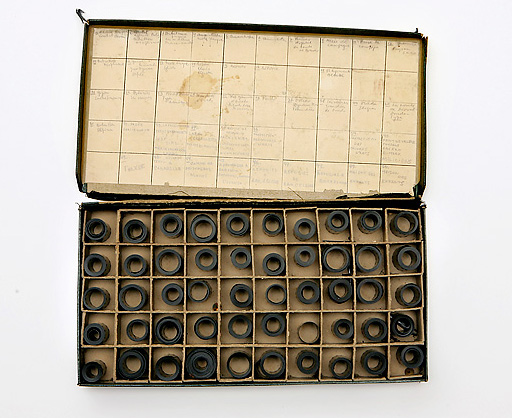 Photo by Tony Cenicola
Photo by Tony Cenicola
Great story in today's Times on Robert Capa's lost negatives.
January 18, 2008
Joakim Eskildsen
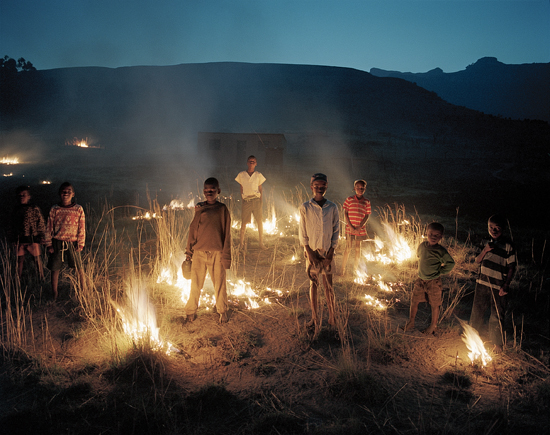
I had never gone through Denmark based photographer Joakim Eskildesn's portfolios because the work I had seen of his had a high polish finish which doesn't suit my taste (overly dramatic skys are always the tipoff...National Geographicy for want of a better adjective.), but his project titled iChickenMoon which I believe was shot in South Africa is beautiful stuff and got me looking. And my stylistic qualms notwithstanding Eskildsen has seen more than most of us, and his portfolios all hold fascinating imagery. His site is worth delving into.
December 19, 2007
Guillaume Herbaut
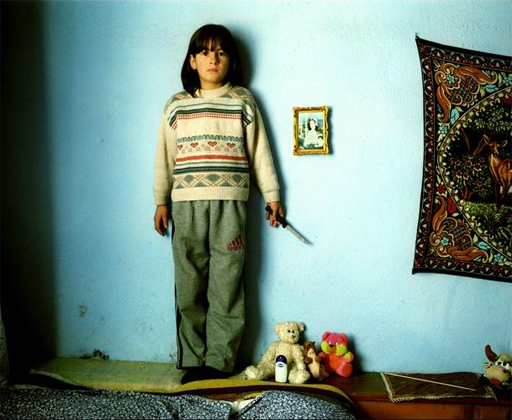
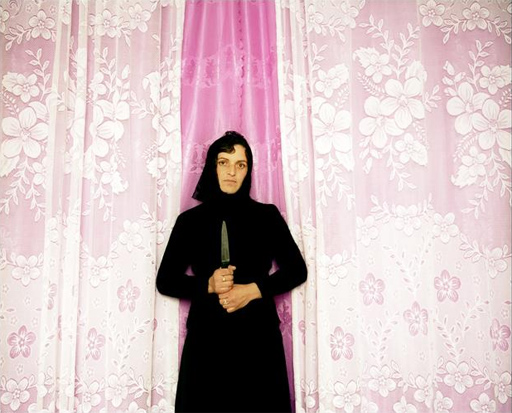
Guillaume Herbaut travels to many of the world's grim hard places; his portfolio is a catalog of suffering and woe. By photographing what most of us would run away from he forces us to consider the large swaths of the world where misery is the norm. The two images above are from the series Vendetta taken in Albania where thousands of people are locked in blood struggles...
November 30, 2007
Time and Light
When I was a kid one of things that made photography so compelling was the idea that it was a way to fold time. I dabbled with long exposures, double exposures, photographs of the same exact spot on different days, etc etc. Later I became a light junkie... sometimes spending days scoping out a place to find the exact time when the light would be just right-obsessing over the exact film stock to record the blue of my grandmother's front wall when it was first illumated with morning sun. After that I became emotion obsessed and so on and so on... I imagine most beginning photographers go through some similar trajectory. This comes to mind because today I was looking at the work of 2 photographers who have distilled their work down to time and light. Both work with a camera on a tripod and a mirror to make their images.
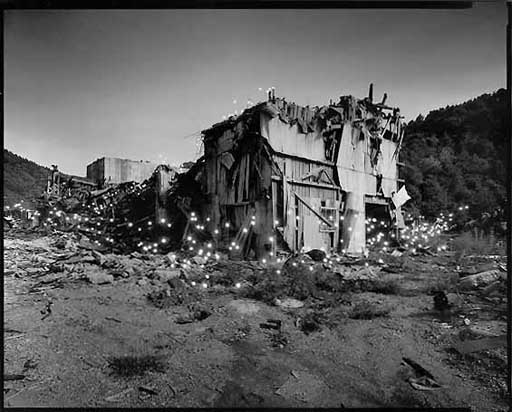
Photographers who shoot long exposures and light trails are a dime a dozen, but Tokihiro Sato's shothe manages to create light that feels organic and mysterious. Many of his images remind me of fireflies (they remind me Crewdson's firefly pictures more than actual fireflies) or of childhood imaginings of sprites and woodland ghosts.
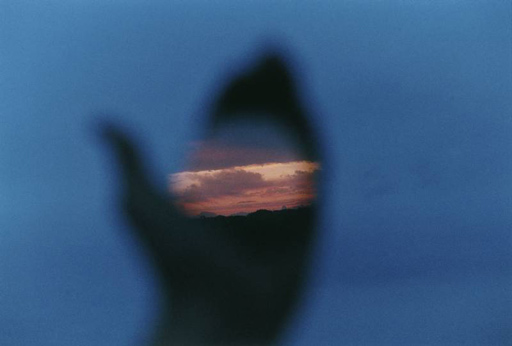
Julianne Swartz makes similarly lyrical images using the same basic tools as Sato. Her Placement series is a project in which she shoots photos of hands holding mirrors reflecting the opposite horizon. I saw a few of them at Mixed Greens recently and they've stuck with me. If you're in Manhattan you should check them out.
September 19, 2007
Clayton Cottrell and Jaret Belliveau
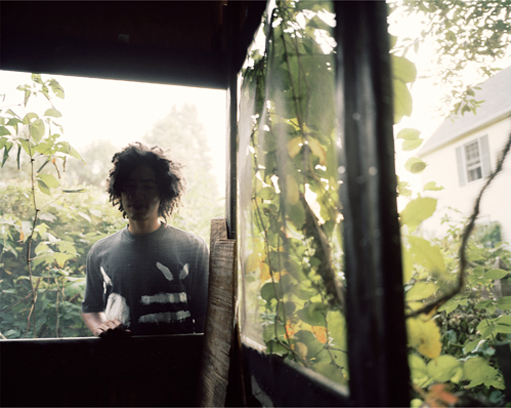 Check out SVA MFA student Clayton Cotterell's project 'Teens'. The series is shot without the sentiment or judgment or worship so often seen in series about that age group taken by older photographers.
Check out SVA MFA student Clayton Cotterell's project 'Teens'. The series is shot without the sentiment or judgment or worship so often seen in series about that age group taken by older photographers.
Cottrell's series brought to mind another somewhat darker set of portraits called The Dirt Squad by a young Canadian photographer Jaret Belliveau. Belliveau has several hyper intimate portfolios most centered around his family and their friends...
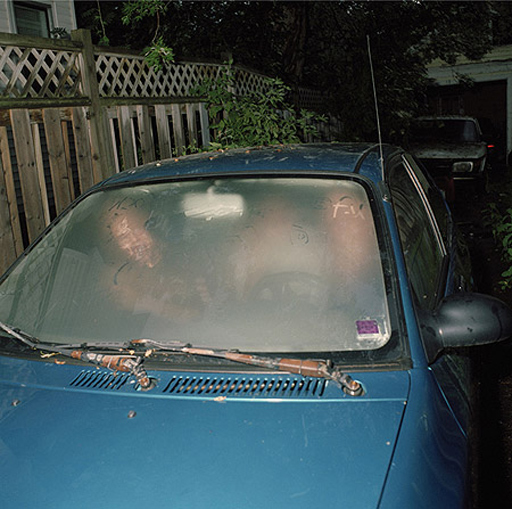 .
.
September 17, 2007
Because things are happening out there...
I've been looking at lots of art photography lately and realize I am, for the most part, tired of posed pictures. I'm hungry for images with the spark of life, pictures that raise more questions than they ask- those that force you to look and look again.
Two of my favorites from this week:
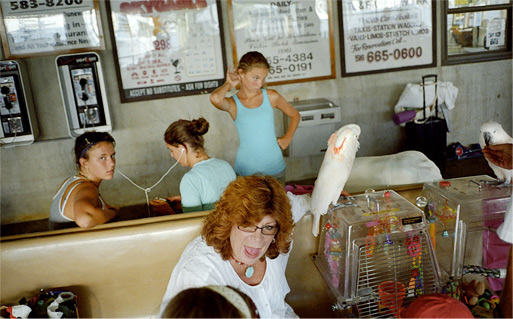 Eliot Shepard
Eliot Shepard
July 24, 2007
More Prokudin-Gorskii Images
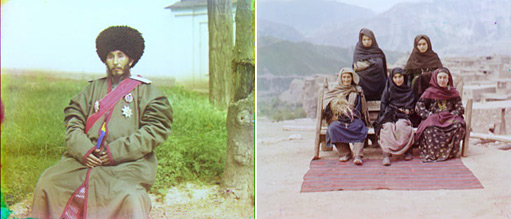
About 2 years ago I linked to an exhibition of early color photography by the Russian Photographer Sergei Mikhailovich Prokudin-Gorskii. Now a Belgian researcher, Frank Dellaert, at Carnegie Mellon has converted thousands more of the Prokudin-Gorskii images (the restored color was produced by a technique called Digichromatography which digitally combines the 3 black and white glass plate originals shot with blue, green, or red filters).
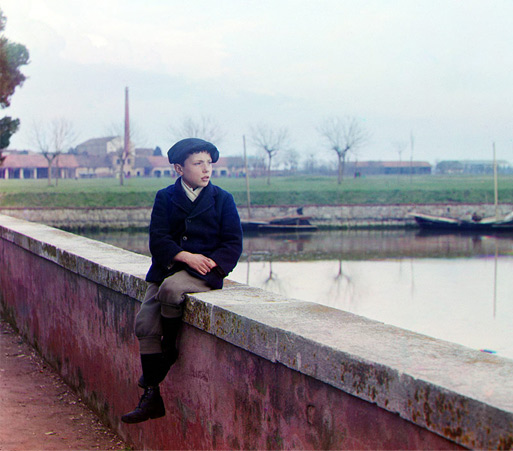
Alex Gridenko has also converted more of the images... There are only 60 images on his page, but he did nice large versions and his conversions were obviously carefully done by hand.
Well worth the clicks...
I remember seeing some early color photography from the same era of New York City in a book somewhere, but I can't find it online. Does anyone know what I'm talking about?
July 20, 2007
3030: New Photography in China
Ping Magazine interviews John Millichap editor of the new book 3030: New Photography in China as well as some of the contributors of the book. Of the book, one online reviewer wrote:
My main impression of looking through the book was adolescence. These are young photographers indeed, and the photos contain a heavy mix of the sort of self-obsessed, crude, and banal that you might expect from a similar collection anywhere in the rich world. That is, these young photographers are being normal. This bodes well for the future of China even if it does not suggest much for the future of photography.I would agree with the first conclusion that it bodes well for the future of China, but would disagree with the second that it "does not suggest much for the future of [Chinese] photography." Even 15 years ago this kind of book would have been impossible. This is the first generation of kids allowed to be self indulgent, allowed to pick up cameras and call themselves artists. And is not self indulgence a necessary step towards maturity? And the reviewer doesn't seem to pick up on the humor and sense of freedom the book showcases. Also, of course, this is just one survey even from the opposite site of the world it would not be difficult to put together another set of 30 young photographers with a somewhat different editorial outlook so let's not condemn the future of Chinese photography just yet.
Amazon: 3030 New Photography In China
Many of the photographers in the book have blogs: 223 Birdhead Peng & Chen Alex So Ou Ning Yao Yi Chun Xu Zi Yu Liu Ding Cao Fei Zhou Yau yiki liu Zheng Zhiyuan Liu Ren Tang Yi Si Wei BNE K1973 Ziboy Cai Wei Dong Lu Yang Peng
And more emerging Chinese photographers in an exhibition called Chinese Neo by the OPPS felting gallery.
July 18, 2007
Jean-Christian Bourcart
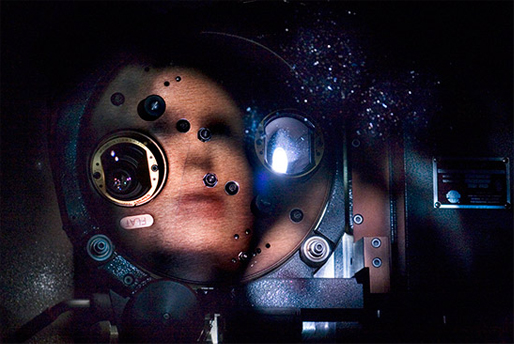
This image is from Jean-Christian Bourcart's Stardust project which he describes this way, "In my neighborhood, just behind the void of the World Trade Center, there is a multiplex theater where I go early in the morning. There, in the empty screening rooms, I photograph the little window that separates the projection cabin from the public space; or more precisely, I photograph the image that appears when the film passes through the window."
Bourcart's website showcases a wide range of projects in a variety of styles, but all have a trademark detached voyeuristic/cinematic quality about them. The artist comes off as having loads of confidence (maybe even arrogance), but not in a way that is off-putting..it just feels.. very... um... very French.
Note the text area of the site includes some interesting reads including an essay on Bourcart by Nan Goldin.
July 17, 2007
Dr. Peter Henry Emerson
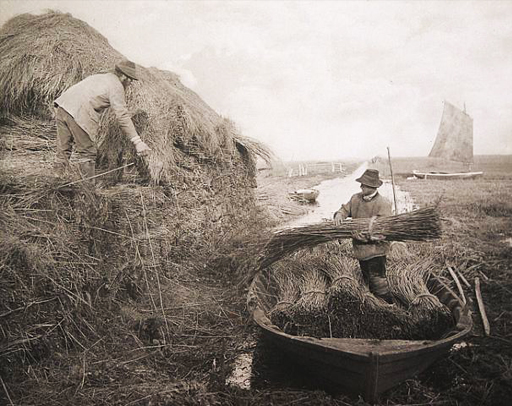
Peter Henry Emerson was one of the first vocal proponents of "naturalistic" art photography (photography done out in the field) at a time when most art photographers worked exclusively in the studio.
I've heard rumors that a museum in England is going to publish a catalog of Emerson's works for an upcoming show, but I'm not seeing anything on google. Do any readers out there know anything about this?
By the end of his life, Emerson completely reversed himself and published a pamphlet titled 'The Death of Naturalistic Photography'. A quote: "I have...I regret it deeply, compared photographs to great works of art, and photographers to great artists. It was rash and thoughtless, and my punishment is having to acknowledge it now... In short, I throw my lot in with those who say that Photography is a very limited art. I deeply regret that I have come to this conclusion..."
July 10, 2007
John Szarkowski
Virtually all the photography blogs I read, have paused to note the passing of legendary curator John Szarkowski who played a major role in establishing a place for photography in the art world. I reread The Photographer's Eye last night (you can find the opening essay on the web as both pdf and html...) and was struck by this paragraph...
But it was not only the way that photography described things that was new; it was also the things it chose to describe. Photographers shot "…objects of all sorts, sizes and shapes… without ever pausing to ask themselves, is this or that artistic?" Painting was difficult, expensive, and precious, and it recorded what was known to be important. Photography was easy, cheap and ubiquitous, and it recorded anything: shop windows and sod houses and family pets and steam engines and unimportant people. And once made objective and permanent, immortalized in a picture, these trivial things took on importance.
By the end of the century, for the first time in history, even the poor man knew what his ancestors had looked like.
This same paragraph could be applied today to digital image making versus film photography as film becomes increasingly "difficult, expensive, and precious" when compared to "easy, cheap, and ubiquitous" digital images...
Earlier on in the essay Szarkowski noted
The invention of photography provided a radically new picture-making process—a process based not on synthesis but on selection. The difference was a basic one. Paintings were made—constructed from a storehouse of traditional schemes and skills and attitudes—but photographs, as the man on the street put it, were taken.
This also made me think of digital imagery and the ease in which is manipulated of synthesized... I wonder what Szarkowski would have made of today's digital image making that is rapidly turning film photographers into curious and arty anachronisms. Would it matter to him or would he dismiss the entire digital vs film debate that rages so fervently amongst photographers today as irrelevant? He seemed to value image itself as opposed to the mechanics of making it so my guess is he wouldn't have paid the debate much heed. His view was always expansive:
The history of photography has been less a journey than a growth. Its movement has not been linear and consecutive but centrifugal. Photography, and our understanding of it, has spread from a center; it has, by infusion, penetrated our consciousness. Like an organism, photography was born whole. It is in our progressive discovery of it that its history lies.
June 28, 2007
Robbert Filck
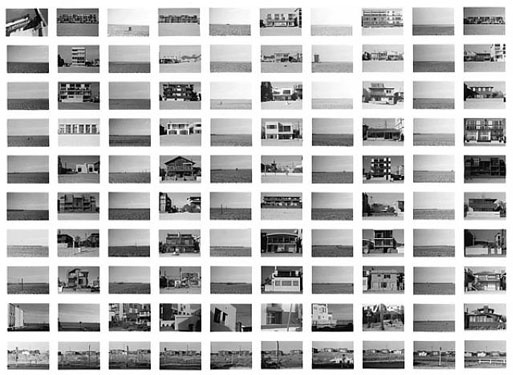 Venice Beach, 1980
Venice Beach, 1980
There are some photographers whose work doesn't translate well to the web. Robbert Flick is one of them. His photographic murals are often 7 or 8 feet long and consist of hundreds of stills taken in sequence along specific roads. He's been making these kinds of images for a long time and moreso than many artists who work with a single idea his collages become more interesting over time because of the changes inherent in the landscapes he is traversing.
Flick presents several sections of his Along Central mural on his website. The photographs are in a format called MrSid which is optimized for very large images full of detail (MrSid often used with maps. Get the MrSid viewer here). After downloading the software and option clicking to save the various files to your hard drive you can zoom in and out of the murals down to the level of single frames... It's worth the effort if you're into this sort of thing.
Ghost Trajectories is a website going into more technical detail on Flick's murals. The information as it's presented reminds me of 19 century landscape surveys which often included maps with their photographs...
Flick is sometimes accused of ripping off Ruscha's Every Building on the Sunset Strip but that's unfair. Both sequential image making and mapping have a long traditions going back to the dawn of photography and Flick in returning over and over again to familiar terrain has built a body of work that has his unique signature..
Semi related: Natchwey's sequential mural, murals from film stills
June 22, 2007
a new american portrait
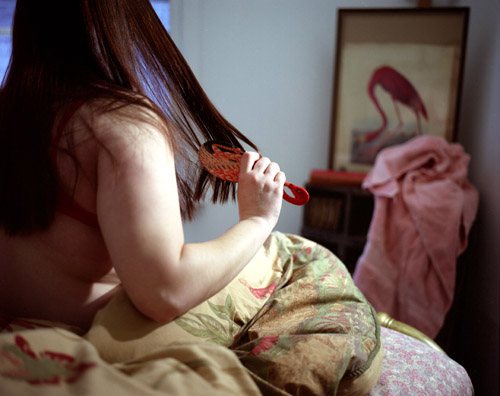 photo by Benjamin Donaldson
photo by Benjamin Donaldson
Every blog that has anything to do with photography has mentioned the exhibition A New American Portrait opening today at the Jen Bekman Gallery. The opening will be packed so if you want to actually see the photographs, plan on arriving early or returning later in the week. This promises to be a killer show and perhaps one that surfs zeitgeist smartly enough to be an deemed an important one. Jen has mentioned she titled the show 'A New American Portrait' as opposed to 'The New America Portrait' because the natural limitations of her small gallery space placed certain constraints on the scope of the selection of images. My suggested remedy: expand the show into a book not bound by lack of wall space...
Full disclosure, I'm partnering with Jen on a new venture called 20x200. If you're curious, you can read more about it here and here. Much more on 20x200 soon.
June 19, 2007
Photography from Afar...
Perhaps because I haven't had a good travel fix for my wanderlust lately I've been seeking out portfolios from photojournalists covering places I want to visit. Here are two that scratched my yen for a walkabout:
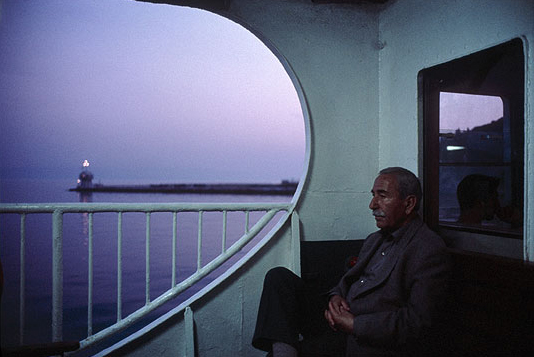 Magnum photographer Alex Webb's Istanbul City of a Hundred Names
Magnum photographer Alex Webb's Istanbul City of a Hundred Names
and
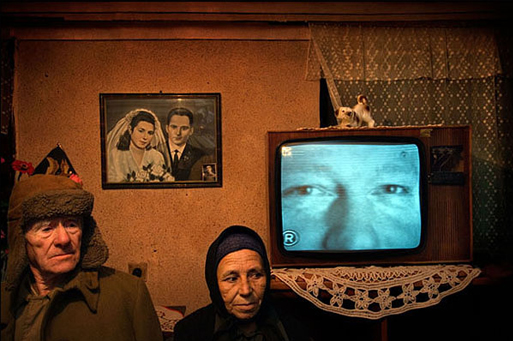 Tamas Dezso's Romania portfolio...
Tamas Dezso's Romania portfolio...
June 12, 2007
Oceanscapes...
When I was in college I interviewed Roy Lichtenstein for a paper and during the course of the interview we started talking about landscapes, specifically oceanscapes, "You know what picture of mine everybody loves, even people in Kansas?" he asked.
"Not even I like that one any more. No. The painting everyone loves isSun and Sea. Do you know why? Because everybody wishes they could live by the ocean and it's easy to put a picture of the ocean in any room in the house. [chuckles] My advice to new artists. 'Do you want to sell paintings? Paint the ocean.'"
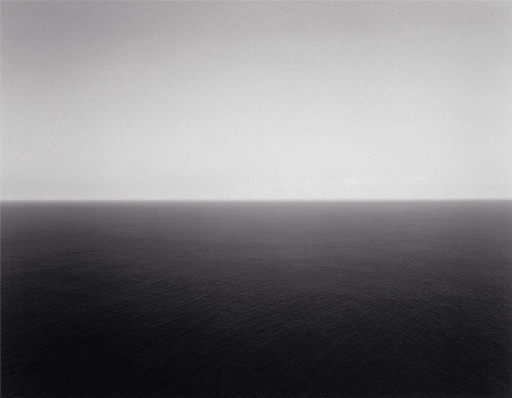 Hiroshi Sugimoto
Hiroshi Sugimoto
(Be sure to click around the Sugimoto website put up by the Hirshhorn for this exhibition. It includes some nice podcasts with the artist.)
May 22, 2007
Olivier on photography...
"I am often accused of being a portrait photographer. A bit like accusing your reflection of being mirror. My people may be staring at the camera but they are not portraits. They are not staring at you, I am."
read the entire post on Olivier Laude's new blog...
May 16, 2007
Heading West
In a couple of hours I'm headed out to attend Review Santa Fe, so over the weekend posting will be sparse...
I've been so busy I haven't had much time to think about Santa Fe, but I'm sure things will click once I'm out there as I have a super list of people to meet. The reviewer lottery was most kind.
Here are just a few Santa Fe participants whose portfolios popped for me: Jeongmee Yoon, William Lamson, Caitlin Atkinson, Whitney Hubbs, Garie Waltzer, Derek Dudek, and Ferit Kuyas (whose website appears to be down right now)... of course there are many others.
May 7, 2007
Jessica Dimmock
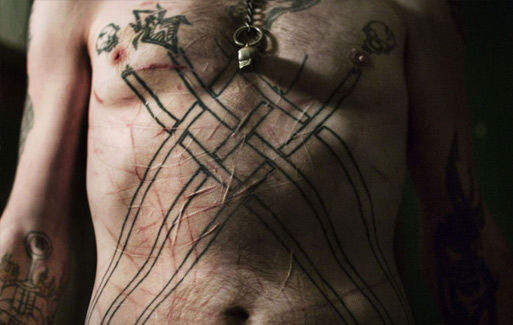
Some of Jessica Dimmock's best photography is difficult to look at. Her photo essay on heroin addicts published last year in the New York Times Magazine (The 9th Floor) was as forceful as anything they've published in ages. Her website includes a complete set of images from that essay as well as essays on child workers in Zambia, a go-go dancer, and transvestites in Nepal amongst others. All are hard stories heartbreakingly well told..
April 30, 2007
Juul Hondius
Today is the Queen's birthday here in Holland so literally everything was shut down, virtually the entire city was out on the streets wearing loud orange outfits. In the center of the city the crush of drunken revelers looked much like the crowd you see in Times Square at New Years, or in New Orleans at Mardi Gras, but further out it felt more like an American 4th of July, with people barbecuing on their house boats, having picnics by the canals and in the parks, and generally being jolly. My big camera got me invited onto several boats where I was always received with good cheer (I'm now officially obsessed with Dutch house boat living.). Late in the evening I met several blog readers who graciously invited me into their homes and provided an evening of good food and great conversation. My new friends Gertrudia and Hilde recommended I check out the photography of Juul Hondius. Illegal immigration came up several times in conversation today and they see the images as highly politically charged...
April 26, 2007
Photographer.ru
Laurel over on Iheartphotograph linked to a beautiful mellow set of images from the Russian heartland by Sergey Chilikov. The pictures are hosted on an online magazine photographer.ru which features russian photography and has many image galleries by Russian photographers. Definitely worth checking it out. Here's a link to the site translated into English by google. The translation is rough but it lets you know what's going on...
**Correction: There's an English version of the site, someone I overlooked the obvious link on the top right corner of the page.
April 26, 2007
Camera Obscura
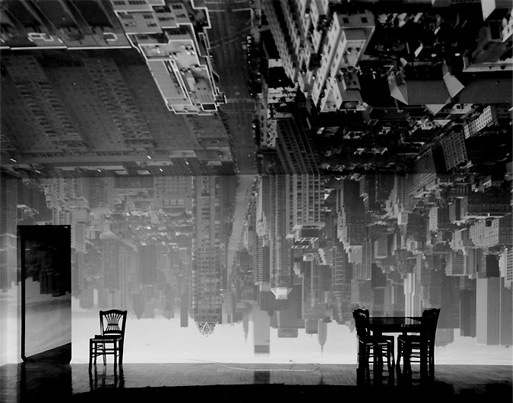
One of the great evocative travel experiences of my life happened in a dingy windowless room in a Rajastani guesthouse. I was bed-ridden with both dysentery and giardia and had not been outside in two or three days. I wanted to change rooms but was literally too weak to move. There were a tiny pinholes in the wall letting in shafts of light and a dim 5 watt bulb overhead which only worked a few hours a day. Hours were spent watching the ceiling fan circle ever slowly around and around and killing flies... so many flies. The nights were absolute black which was actually a relief as even the flies would stop buzzing.
One morning (at least I think it was morning as time had little meaning in there), when I awoke I noticed a dim but unmistakable image projected on the opposing wall... actually several images. There was the inverted village and the red hills, a tree with a swing, the train... dusty blue skies and clouds... The pinholes in the wall were turning the room into a natural camera obscura... They had been there all along but I had been too sick to notice. It is hard to express what comfort those images gave me and I think they were the boost I needed to get well enough to get out of there. I've never seen the camera obscura phenomena in any room since, although I've often dreamed turning a room of our house into one for a while.
I was thinking of those days in Rajasthan today which led me to revisit the work of Abelardo Morell the great creator of roomsized camera obscuras... His work is a reminder all rooms have secret lives as silent witnesses not only of the comings and goings inside but of the world beyond... and this is as true in the great rooms of New York City as it is in some miserable flyblown guesthouse on the Udaipur to Jodhpur railway line.
Related: a camera obscura fan site, Wifi Camera Obscura, Did Vermeer use a camera obscura?
March 21, 2007
100 Year Old Blog
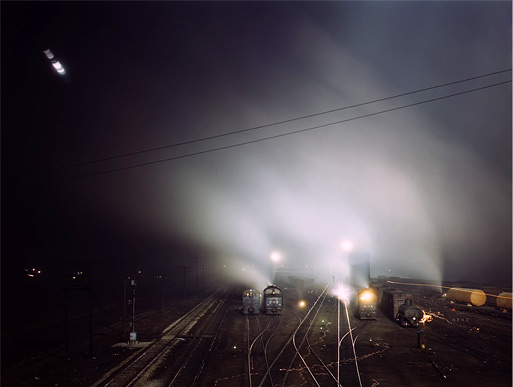
Shorpy calls itself the 100 Year Old Photo Blog, it's a blog featuring well selected vintage images from the early 1900s. Shorpy is the sister blog to The Ghost Cowboy which features photographs of the old west. Both projects are smart marketing for the The Juniper Gallery which sells modern prints of the images featured. (via david gallagher's always super delicious links)
March 16, 2007
H. C. Anderson
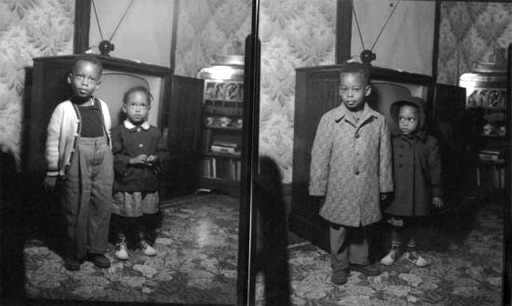
Long time readers of this blog know I love photostudio portraits. In the hands of a good photographer these types of portraits, when collected, become a more than simply the record of people passing through a studio and function a a poetic window on the life of a particular place and time. Henry Clay Anderson's portraits of the people of Greenville Mississippi are exactly such a window.
You can view some of his images on the web along with thoughtfully organized background information at the The Anderson Photo Service website or in person at the Steven Kasher Gallery on 23rd street in New York.
March 5, 2007
Andrew Moore Interview
Joerg Colberg has posted a thoughtful interview with Andrew Moore, one of my favorite contemporary photographers.
February 19, 2007
Japanese Photoblogs
After a post a few weeks ago featuring a Japanese photographer, several emails came in from Japan pointing me to this big list of Japanese photoblogs. The list features a huge range of sites from serious art portfolios to casual everyday "I ate eggs this morning" kind of blogs. Navigation is often obtuse so be warned. Images from a few of the photographers whose work caught my eye are listed below (click on the image to launch the respective sites).
Here's a bonus: The project "broken" on this blog by Akihiro Takahashi adds snippets of live sound to the images... I find it adds a real immediacy... nice idea.
February 19, 2007
New round of Hot Shots
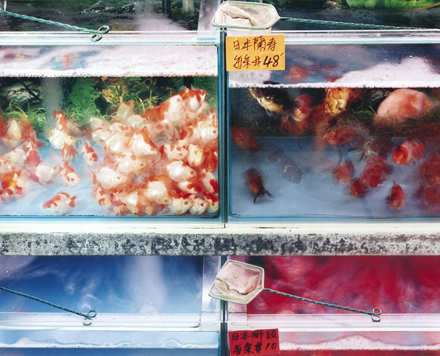
Jen Bekman and her panel have announced a new round of Hot Shots winners. I particularly like the work of Ka-Man Tse (her image is shown above) and can't wait to see her prints in person. You can find more of her work on her website.
February 16, 2007
The Ethnographic Image: Film, Photography and Ethnography
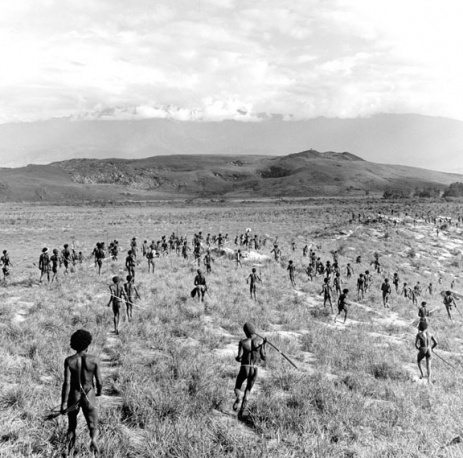
New Yorkers should note that tomorrow night (tonight actually as it's after midnight) Nelson Hancock will be moderating a panel discussion on ethnographic images at the School for Visual Arts... sounds pretty interesting and I'm going to try to make it there. The image above was taken in Guinea by panelist Robert Gardner and is titled Ritual War.
The panel will include:
The aforementioned Robert Gardner, filmmaker "Dead Birds," "Rivers of Sand," "Forest of Bliss." Author most recently of The Impulse to Preserve (Other Press 2006). Founder of the Film Study Center at Harvard. images
Susan Meiselas photographer and filmmaker, books include: Nicaragua, Carnival Strippers, Kurdistan and Encounters with the Dani. Meiselas is a member of the Magnum Photo Agency and has held solo exhibitions in major cities around the world. She has received numerous awards, including the Leica Award for Excellence, The Hasselblad Foundation prize and a MacArthur Fellowship.
Rosalind Morris, professor of anthropology, Columbia University. Her writings include monographs on spirit mediumship and the mass media in Northern Thailand, and the archive of visual anthropology. Other essays have addressed photography and its discontents, art in South Africa, the history of fetishism and the violence of culture in anthropological theory.
For more information, please contact the Artist Talk on Art office at 212-779-9250 or contact Nelson Hancock, the panel organizer and moderator at 718-408-1190.
@ School for Visual Arts (209 East 23rd) in the amphitheater. It's $7.
February 14, 2007
Photostudio Vernacular
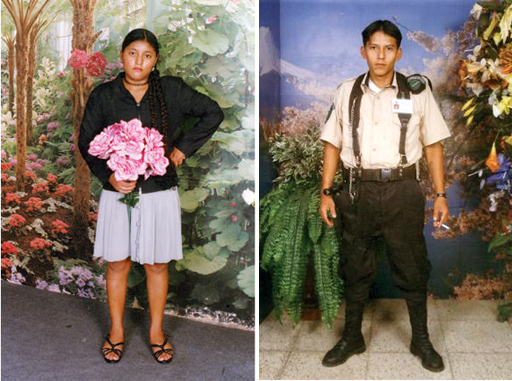
On the heels of yesterday's post about a photostudio photographer, today I discovered a fantastic set of photostudio images on flickr. No context is given so I don't know the story behind them.
January 25, 2007
Photo Eye Galleries
For the past couple of years Photo Eye has been my favorite photo magazine/photobook source with consistently smart editorial choices and thoughtful reviews. Tonight I gave their website a spin for the first time in a very long time and discovered they host online galleries with scores of artists. Unlike many similar sites these gallery feature decent sized images (on each artist click the small thumbmnail, then the medium sized one, to get a pop out window with large images). Many photographers also have prints available. Navigation of the galleries is clumsy, and artist selection is somewhat tame, but suffering bad HI is a small price to pay to be able to check out so many excellent photographers in one place.
December 18, 2006
Mystery All Around
In small towns, like the one in which I grew up, you can often go weeks without running into a stranger. You know people's stories and they know yours. You find mystery by picking up on dissonance between the facades people present and the realities underneath... But in big cities virtually everyone you encounter in a day is a stranger. You pick up little snippets of conversation, see bits of urban drama, but you always catch the stories in the middle. And the beginnings and endings are left to the imagination. Why was there a man in a black overcoat and black sunglasses standing alone on the promenade holding a child's pinwheel? What happened to the young couple fighting on Cranberry street? Did he mean it when he said he would change? Change what? Did she believe him or was she going back to her mother's house in Connecticut as she had threatened? Did the young thief being chased down Atlantic Avenue by cops escape with his loot from the pharmacy? And what of the very old man who wanders the neighborhood with a little camera around his neck? What does he do with those pictures he takes so unobtrusively, unnoticed except by other photographers? Does anyone ever get to see them?
related: photographs I did not take today, unphotographable, urban drama
December 1, 2006
Andrew Moore Show
One of my favorite photographers, Andrew Moore, has a show up at Yancy Richardson through the end of January. It's a broad review of his work over the last couple of years... I missed the opening last night which is annoying as I was only a few blocks away.
535 West 22nd Street 3rd floor
New York NY 10011
tel 646-230-9610
fax 646-230-6131
Hours: Tuesday - Saturday 10-6 PM
related: Andrew Moore's Russia
November 10, 2006
The New West
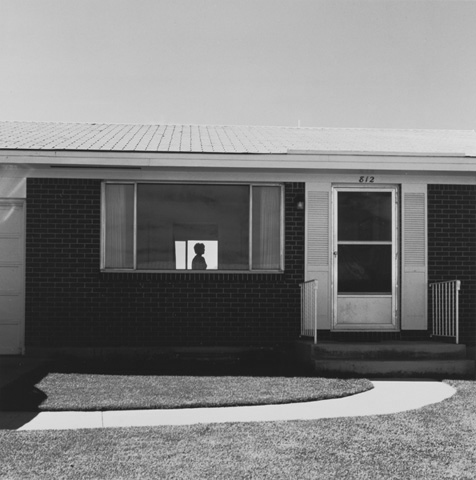
These days photographers whose work focuses on the landscape of suburban dystopia are a dime a dozen. Strip malls, gas stations, chain stores, and so on. But few of the photographers inhabiting this milieu can compare to Robert Adams who was out there in the 60's and 70's. I found a signed copy of The New West, his minimalist masterpiece at my favorite used bookstore this morning for $16. Looking through the book I was struck by how Adams' photography works on me like Antononi's early films (La Notte, Aventura) in which each frame is so subtle and formally perfect that they need to be digested and relished slowly. The bookstore owner was happy to get rid of the book, "Who wants to look at pictures in black and white anymore?" he asked as I paid.
related: found at the same bookstore
November 7, 2006
Andrew Garn
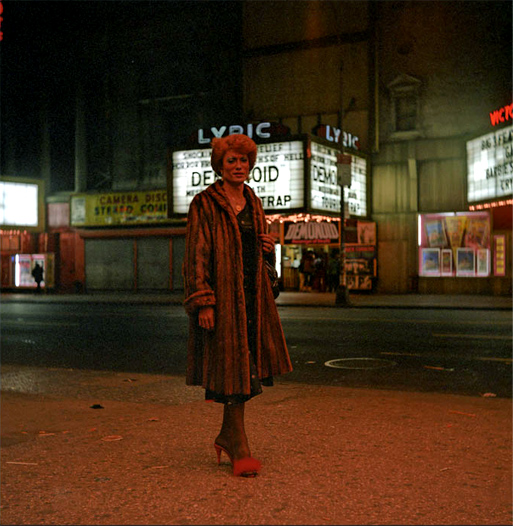
A few weeks ago at PhotoNY I stopped by the booth of AM Richards Fine Art where the gallery was exhibiting the street photography of Andrew Garn taken in Times Square during the 80's. Looking at the prints today you can't help wonder what happened to all the people in that darker, grittier New York which has been all but erased. Garn's website doesn't do justice to the images the gallery has selected, so if you happen to be in Brooklyn, check them out in person.
328 Berry Street (Williamsburg)
Brooklyn NY 11211
USA
tel: 917 570 1476
November 3, 2006
Souvenirs
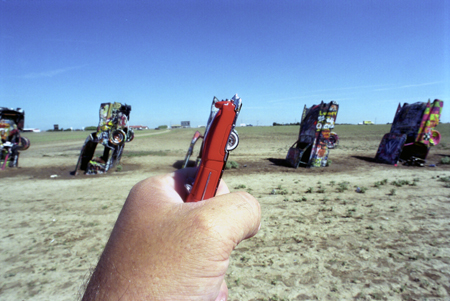
Check out Michael Hughes' super fun souvenirs project.(found via davidfg's linklog.)
October 8, 2006
Richard Benson on SX-70 prints
"The final small color Polaroid camera of any distinction was the SX-70. The company got into the practice of giving film and cameras to well-known photographers, who would repay the gift by the donation of some pictures made with the materials. Toward the end of his life Walker Evans could be found with multiple cameras, and a case or two of SX-70 film. When he found a suitable subject, Evans would expose a case or two of SX-70 film. When he found a suitable subject, Evans would expose a full pack of eight sheets of the same thing, stuffing each successive exposure in his jacket pocket while they were developing themselves. ... Evans tended to find a young man to drive the car, make the tea, and carry the packages, so he could keep working even as he became more and more frail with advancing age. He had the habit of collecting old signs and detritus from the roadsides, and those of us who traveled with him were often pressed into service to steal the old advertising signs or even, on some occasions, actual road signs."
excerpt from The Physical Print
As an aside: I'm sad to report that my beloved SX-70 with sonar autofocus has died. 20 years of rough handling and several trips around the world have left the plastic body cracked. A few shots from this camera can be found here.
related: The Polaroid Collective
September 29, 2006
The Physical Print
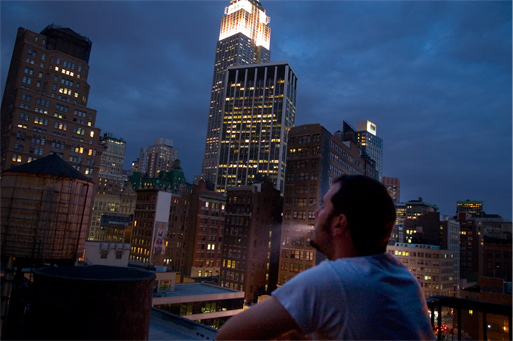
I was hanging out with my friend and printer Gabe Greenberg (pictured above taking a break on the fire escape) last night and found a copy of Richard Benson's "The Physical Print - A Brief Survey of the Photographic Process" in his studio. This is an super little book detailing in concise clear language (and with beautiful illustrations) the history of photographic printing methods. It seems to be an exhibition catalog for this show. I can't find a copy for sale anywhere online (Gabe received his as a gift). Any ideas?
Update: I called the Yale art department and they sent me a copy... so excellent.
September 27, 2006
The Midwest Photographer's Project
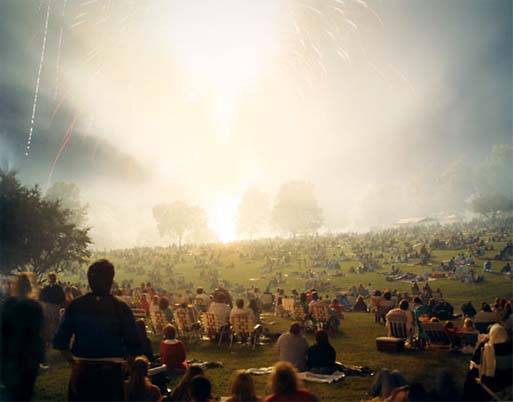
Photo by Mike Sinclair
I was about to publish the following blog entry, "It seems to me that some of the most interesting contemporary American photography is coming out of the Midwest. The Museum of Contemporary Photography in has put together collection of work from 75 photographers living out there in the middle of the country and has titled it the Midwest Photographer's Project," when I noticed this Gallery Hopper entry in my RSS reader saying virtually the same thing and adding information about a talk this Thursday by three of the photographers at Aperture. Can't wait to pick up the book.
September 27, 2006
Dilemma
A friend of mine is a successful photographer known for doing a certain kind of work... large format cameras, spectacular handmade black and white prints using obscure processes, etc... He's an obsessive photographer who shoots in other styles, but his other work some digital, some shot on 35 clashes in theme and style with his classy 'brand.' To avoid sullying his good name he created an alternate persona and started showing the alternate work under that name. All contact with the outside world is through associates in on the joke. As part of the joke he invited several other photographers to shoot in the style of the alternate persona to create a body of work. The problem is the alternate persona has been successful. The work has sold, been in shows, etc. Dealers and collectors want to meet the artist. The artist always refuses and the refusals of course serve to enhance his popularity. Now an important magazine has asked to interview the artist. The question is what to do. Do the interview and risk a slip up, continue to be mysteriously unavailable and continue the joke, or spill the beans and risk lonelygirl15 type resentment?
September 15, 2006
Leica M8
DP Review feaures a preview of the Leica M8 today. For a digital camera it's design is refreshingly clean without the overabundance of buttons and controls found on most comparable machines. The size is just about perfect. Still my dream digital cameras would not be a rangefinder. I still hope for an SLR, with this level of simplicity, about this size, with a full sized sensor. And all this said, even if someone were to give me an M8 tomorrow I'd still mainly shoot with my Nikon FM2 and Mamiya 7... well I think I would. Give me an M8 and let's see.
Update: I have now both played around with an M8 for a while and seen the files it produces... the camera feels just about perfect in the hand, and for me has exactly the right number of controls (very few and virtually all manual dials). If you love other cameras in the M series, you'll love this one too. The RAW files are very sharp. I was looking at them with a master printer and he feels you could easily go up to 30x40 with them even at 10 megapixels... so in essence they are about equivalent to 12-14 megapixel files produced by cameras with inferior lenses. Noise is pleasantly film-like. Low light performance was slightly less good than the 5D. The price is rumored to be around 5,000. Time to sell the car? Probably not...
September 12, 2006
Sweet Flypaper of Life
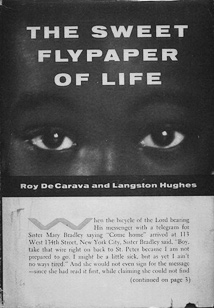
I found a copy of Sweet Flypaper of Life by photographed by Roy DeCarava and written by Langston Hughes in a used bookstore yesterday for $3. I've always wanted a copy, but have never found one in good shape at a decent price. It's a picture book marrying an imagined story by a woman in Harlem to images...poetic fiction. I couldn't think of many other examples of this kind of collaboration, (Photobook text even when it is written by poets and famous authors is usually simple description, and when photographers do create imagined narratives they usually write the text themselves). Anyway, beautiful and fascinating book. My guess is in this case the words came first and they were illustrated by DeCarava but somehow it would please me more if it were the other way around.
September 7, 2006
Photographer + Baby = Blogger
Alec Soth's child had inspired him to blog. (via a tip from Eliot.)
Update: In a few short weeks this blog has moved up to the top of my daily read list. Soth is every bit as sensitive and intelligent a writer as he is a photographer.
September 4, 2006
Show Opening
Travels Without Maps:
Images from China's Western Frontiers
"Nelson Hancock Gallery
111 Front St. #204 (Dumbo)
Brooklyn, NY 11201
Opening Reception September 14, 6-8PM
Show continues through October 14th.
I hope you can excuse me for being a bit self promotional, but I wanted to let everyone know about my upcoming show. If you're in the New York area on September 14th, please stop the opening by and say hello.
August 27, 2006
How to take a good picture
When I was 14 I wrote this: "truth, emotion, technique, beauty. A good photograph has 2 of these. A great photograph 3. A photograph you never forget has all 4."
A bit pompous perhaps, but it still basically works for me.
May 27, 2006
Late Afternoon, Garze
Do you ever miss the light of a particular place? It was misty and humid today in New York City and I was missing the clear light of Garze where late every afternoon you get these great long shadows as the sun sets below the horizon.
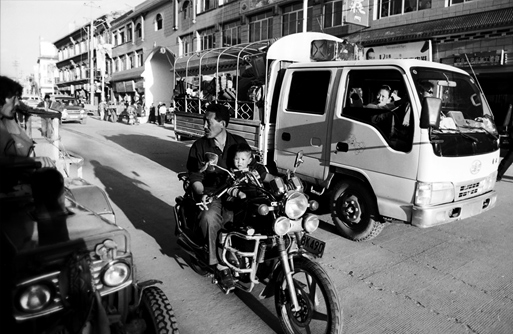
May 7, 2006
Bathing Beauties
Those of you who have visited the house know of my minor obsession with vintage panoramic images. The American Memory Project houses a rich selection of panoramics including some of my favorite subjects: beauty contests, disasters, motorcycle clubs, and presidents.
April 20, 2006
ReGeneration: 50 Photographers of Tomorrow
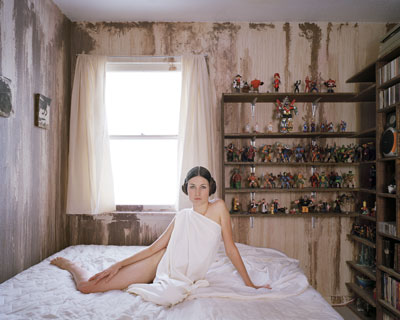
Photo by Angela Strassheim
On Tuesday by chance I ran into Pieter Hugo the South African photographer I have mentioned on this blog. Being a fan I introduced myself and he invited me to a show he's a part of: reGeneration: 50 Photographers of Tomorrow. The opening took place tonight at the Aperture Gallery. Of the 50 the photographers, the ones whose images grabbed me most included Mieke Van de Voort who shoots the homes of people who died alone, Natalie Czech's interiors, Angela Strassheim's creepy playful portraits, Jaret Belliveau's intimate family record and of course Pieter's 'hit you in the solar plexus' images from Africa.
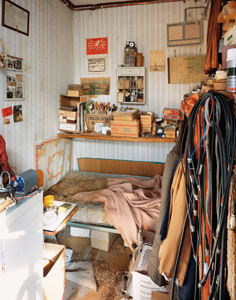 I met several of the photographers and all turned out to be interesting folk. I was particularly impressed with Ms. Van de Voort. In a very short conversation we covered topics including transformative power of death to confer meaning on objects and the loneliness of children. An email she wrote about her work can be found here. (I had a hard time finding her images online so you'll have to check out the show). Jaret Belliveau is a young soulful Canadian whose pieces in the show documented his family's struggle with cancer and it's aftermath. His current work (not in the show... he showed me his book) is equally unblinking and personal. He follows his little brother's friends through their chaotic high school years. And of course Pieter had interesting things to say about his work and his process. All in all a nice evening I enjoyed hanging out with everyone over beers. The show runs through June 22. 547 West 27th Street, 4th floor
I met several of the photographers and all turned out to be interesting folk. I was particularly impressed with Ms. Van de Voort. In a very short conversation we covered topics including transformative power of death to confer meaning on objects and the loneliness of children. An email she wrote about her work can be found here. (I had a hard time finding her images online so you'll have to check out the show). Jaret Belliveau is a young soulful Canadian whose pieces in the show documented his family's struggle with cancer and it's aftermath. His current work (not in the show... he showed me his book) is equally unblinking and personal. He follows his little brother's friends through their chaotic high school years. And of course Pieter had interesting things to say about his work and his process. All in all a nice evening I enjoyed hanging out with everyone over beers. The show runs through June 22. 547 West 27th Street, 4th floor
April 10, 2006
Momus on Photoblogging
"The girl is very handsome, but what's so magnificent about this picture, apart from its immediate beauty, is that it takes me to a world where groups of friends re-enact scenes from Godard films. That's already a very bold, sexy and interesting world. It reminds me that an image is not just remarkable for itself, but also for the parallel world it invites us to imagine and enter, the world in which the anomaly it depicts is normal."
From an essay on photoblogging by Momus. (describing this page)
March 30, 2006
990000's Tutorials
Ever wonder how Red gets such a distinctive finish out of his digital images? He's been posting a really nice series of simple Photoshop tutorials on his site.
March 16, 2006
Photography Weekend
Now that it's less freezing it's time to do some gallery hopping. These are some photo shows I've want to see:
Paris in the 50's looks fun.
The always great Martin Parr has a show at Danziger Projects.
Hard not to get excited by a Michael Wolf show. More Michael Wolf on his own website. His images never fail to amaze.
If I make it uptown I'll check out the John Szarkowski at MOMA. I had never heard of Szarkowski until this piece on NPR.
The show titled 1968: All in a Dream intrigues. It's a collection of amateur photos from 1968 collected by a guy who worked at a photo processing lab in Boston.
Zabriskie is showing Tomoko Sawada's Schoolgirls. Her website.
Mark the new Sallie Mann show as another must visit.
I've been seeing an awful lot of images taken of taxidermied animals lately, but this image by Richard Barnesjumps out (at Hosfelt).
Anthony Lepore makes interesting images and I like his nice big prints but I'm not sure I love the work... they feel a bit cold to me. Emotionless.
I'm curious about the new Nan Goldin exhibition (no imageS). She's a photo hero of mine although I haven't been compelled by her recent work as much as I was by her early work... That said, is there anyone who could keep up that level of intensity through a career?
As an aside why are gallery websites so god awful, so.... 1995. And why so few images from your exhibitions? Here's a humble suggestion: 1) publish your homepage as a blog using movabletype or some other easy to manage blogware. This would allow you to stay up to date without a fuss and keep your audience up to date via rss 2) get good digital images of your artists' work and publish galleries using iphoto or aperture (this will give you professional easy to navigate, easyt to update galleries).
Jen Beckman gets all this already. Her site a) incorporates a blog b) has an RSS feed. My only suggested improvement would be to link images from a specific artist to a gallery by that artist (right now clicking images takes you to a page with only that image on it which is a bit disorientating)...
Anyway that's it. See you out there. I'll be the guy with the stroller and the camera.
March 9, 2006
ABCDF: Portraits of Mexico City
Are you in New York and looking for something to do this weekend? ABCDF promises to be a great show. Many of the photographers like Daniela Rosell are well known but there are many names that are new to me. I'll try to make the opening on Sunday.
UPDATE: We went out today to check out this show and I was disappointed. The photography was presented mounted on boards and as big transparencies. Both choices minimize the power of the photograph as an artistic object, giving them a more commercial and less substantial feel. Many of the prints were poorly made. Additionally the curators made several bad editing decisions leaving the show without coherence. Modern photography was thrown together with a random shot of the 50's. Interior scenes were juxtaposed with architectural photography. Images practically screaming to be printed large were presented small and several humdrum shots were shown large. A few somewhat mismatched video and sculpture pieces were thrown in for no apparent reason. Unforgivably the lighting was bad. All this is a shame because the work of many compelling photographers was on display minimized by the presentation...
February 15, 2006
Mark Powell Interview
I've been looking forward to this interview with Mark Powell ever since I got wind of it a few weeks ago. Both Michael David Murphy's questions and Mr. Powell's answers do not dissapoint. Mark is one of the rare photographers whose words are as compelling as his images.
February 9, 2006
Photographs I did not Take Today
8:30, Borough Hall Subway Station
A toddler with a spiderman costume visible under his winter coat hopping up and down as his mother, oblivious reads the newspaper.
9:45 72nd and 5th
My elderly doctor standing inside a tiny lead nook and peering out of a small window as he x-rayed me.
10:15 The Frick
A group of uniformed schoolgirls on their tiptoes straining to see Girl Interupted at her Music, one of my favorite Vermeers. One girl in the group, uninterested and staring out the window.
1:20 Cadman Plaza Post Office
My son cracking up with my wife across the hall as I wait at the passport window. Everybody else in the room grey and deadpan.
2:40 In front of the State Supreme Court
A very old man with coal black skin holding a small red paper valentine to his chest against the breeze.
3:20 Atlantic Avenue
A woman walking out of a dry cleaners holding 2 translucent bags of clothing up near her shoulders. Her shadow like an angel with gossamer wings flying behind her.
6:20 Somewhere in Cobble Hill
Boys playing baseball in the cold evening on a quiet street. The sun has set, the streetlights are not on, the sky is turning deep blue. They are shadows. I only see the ball.
10:30 Deli on Atlantic
Two Pakistani guys play rock scissors paper behind the counter.
February 2, 2006
RAW file demystified
This pdf file (found via digg) has a good technical explanation of the creation and structure of a RAW file. If you don't know what a RAW file is, please ignore this post.
January 30, 2006
2.8 Interview
I recently did an interview with Michael David Murphy of whileseated.org for his 2point8 project, a blog on the act of photography (as opposed the photographs themselves). Mr. Murphy is a thoughtful guy and his questions made me put into words ideas that rarely make it out of my head. The interview can be found at 2point8.whileseated.org. And stay tuned because he has new interviews with much more interesting photographers than myself coming up.
December 2, 2005
Camera Obscura
Combine mail, pinhole cameras, ebay, and cross continent collaboration & you've got yourself a pretty cool little art project. Check out the Camera Obscure 2005/1-Inf project.
November 13, 2005
Mysteries of State Street
There's an old guy who lives down the street from me. The outfits vary, but he wears sunglasses and a tweed hat year round. Now that it is fall he also wears a trenchcoat. On sunny days you can find him sitting on his stoop or hanging around outside the deli on Henry & State reading the newspaper or chatting up the little old ladies. I've never seen him without a camera-usually a little Olympus, but sometimes a Leica. He fires off pictures inconspicuously, fast and smooth. Yesterday I found myself next to him at the deli "Why the camera every day?" I asked. "Because I want to remember." he said with a slight smile. Today I noticed him down the block. He snapped my picture, tipped his hat, and continued on without breaking stride.
November 2, 2005
Nikon D200 vs Canon EOS 5D
Nikon shooters around the web are abuzz about Nikon's new D200. In general the response to the specs has been positive (I don't know anyone who has actually handled one). Am I the only Nikon guy disappointed by the package? To me it looks like D70 with a slightly better chip/software. I've never been a Canon guy, but the EOS 5D has a couple of features that make me look over to the other side. Specifically I like:
1. The chip in the 5D is the size of a 35mm film frame so there is no lens focal conversion factor. On the Nikon the conversion factor is 1.5x. Because the chip is bigger the image in the viewfinder is also bigger. On the new Nikon they put a magnifying lens in the viewfinder to make the view seem bigger, but that's no substitute for the real deal.
2. The 5D is 12.8 megapixels... a step up from the D200's 10.2. Many people wills say, so the 5D has 2.6 extra megapixels, is that worth the extra $$$.. I would say no if megapixels alone were the deciding factor, but...
3. My photographer friends are all reporting the 5D has much better low light resolution and significantly better noise than the D200. I'll have to test this out myself...
Of course the 5D is almost a $1000 more than the D200 which is already expensive... so ultimately I'm not that tempted by either camera. The Nikon isn't enough of a step up from my D70 and the Canon is much more expensive especially when considering it would be all new lenses/accessories for me. If Nikon (or Canon) or anyone else really wants me to plunk down for a new high end digital I want a camera that is the form factor of an FM2 or Leica M6 ie small. I want a big chip with no lens conversion factor. I want at least 12 megapixels. i want much better handling of high dynamic range lighting situations. And I want a relatively simple camera without a ton of modes. Manual, aperture priority, and shutter priority is just fine with me. (As an aside you might ask why I don't consider the Nikon D2 as it is close in price to the 5D....it's simply too bulky.)
To see what really gets my camera geek heart racing step on over to bostick & sullivan's site and check outthe Hobo.
September 17, 2005
Early Color Photography
Boing Boing has a nice link to early American color photographs from the Great Depression. Most of those images are Kodacolor or Kodachrome (as an aside, check out this page on how to date early Kodachrome slides). I've long been fascinated with early photography from the generation before this, ie from the turn of the century. Most of these are Autochromes, the first widely available color photo process invented by the Lumier Brothers.
This is a pretty good timeline of the development of color photography.
The image below is from WWI for me it shows why Autochromes are compelling... there is just something so tangible and accessible about them versus early black and white or hand colored images.

Some linkage: early Russian photography, early French photography, World War I color photography, & a sampling of Lumiere Studio work. More WWI photos here and here (pages 6-8). This gallery of framed autochromes shows how saturated and "real" they can be.
Autochromes are often available on ebay, just search for Autochrome.
Update: Exhibition at UK's National Media Museum: Autochome- The Dawn of Color
September 14, 2005
Photo Notes 2: Photography Advice for Ruby in Minnesota
Another photography related email comes from Ruby a junior high school student who asks: "What advice do you have for me so that I can take pictures like yours? I want to post them online."
Hmmm. Well Ruby I think the goal would be not to take pictures like mine or someone else's, but to take pictures that are your own, that show a little bit about how you see the world. For me photography is not about what you choose to shoot, but about what you choose to leave out. And ultimately it's all about emotion. What do you love? Or hate? What things do you see that other people miss? What moves you?
Highly biased advice:
I've been taking pictures most of my life so it's pretty much organic. Know your cameras. Feel comfortable with them. Get to the point where you don't have to think about how to make the camera do what you want it to do.
Tell a story.
I always tell myself to get closer. The closer you get (within reason) the more emotion you will find.
Long lenses are not a substitute for getting closer.
If you are shooting people look your subjects in the eye.
Slow down. Hang out with your subjects. Try waiting 10 minutes before pulling out the camera, or better yet, an hour.
Wait for the light to get better.
One of the silliest comments I see again and again is "nice depth of field" (ironically usually posted when the depth of field is shallow. People have gotten so used to digital cameras with high ISOs that stop down and keep everything in focus that they have forgotten the possibilities of wide aperture photography. Ditto for slow shutters speeds and motion. This said, don't let the wide aperture become a crutch. Just because you've focused on something at f 1.4 doesn't mean it's interesting.
Don't post pictures of cats (dogs are ok, dogs show emotion, but be sparing).
Avoid clichés. Some common clichés: zoo pictures, pictures shot and then modified with stock Photoshop filters, sunsets, flowers (unless your audience is full of horticulturalists nobody cares), abandoned buildings, graffiti, mannequins, people in clown makeup (or some other silly costume), fall foliage, water on glass (usually shot with a wide aperture), random people walking down an anonymous street, people in wacky t-shirts, pretty clouds, silly signs, empty roads, seagulls, swans, ducks, water reflections, couples on the beach.
Just because you shoot with a macro lens/holga/polaroid doesn't make it interesting.
When taking travel photos try to avoid the touristic. What is touristic? If you see a gaggle of tourists shooting in a particular spot, the images taken from there will be touristic. If it should be on a postcard, it's touristic. Photos of "natives" in tribal dress shot with a long lens, usually smiling at the photographer are touristic.
Turn off automatic stuff: auto-focus, auto-exposure, auto-whatever. Make some decisions.
Edit. Edit. Edit. (I am horrible at this.)
Shoot black and white now and then.
When I choose a picture to post I ask myself "so what?". If I can't answer that for myself, I figure it's not worth posting.
Experiment.
Have fun.
September 14, 2005
Photo Notes 1: Camera To Web
I've had a 2 or 3 requests recently via comments and email to explain my process from shot to post on my photoblog. It's not complicated:
Digital
1. Take picture
2. Use Photoshop's Raw import to select white balance, bump up sharpness, etc. (usually I just use the default settings).
3. Resize in Photoshop
4. Post to Movable Type.
Film
1. Take photo. (Usually w/ Nikon FM2 or FM3 & 24mm lens)
2. Develop negatives.
3. Scan negatives with Nikon Coolscan 5000.
4. Resize & unsharp mask if needed.
5. Post to Movable Type.
In some interior shots I use Photoshop's autocolor to correct for tungsten.
My scanner doesn't deal well with negatives with wide exposure range and the dark part of the photos often come out looking underexposed so in those cases I use Photoshop's "curve's" tool to adjust.
Most of the stuff I've posted recently was shot on film.
September 7, 2005
Nazar: Photographs from the Arab World
This show of photos from the Arab world opens tomorrow. I've admired work from several of the featured photographers for years. Should be excellent.
Exhibition opening:
Thursday, September 8, 2005
6 p.m.-8 p.m.
Aperture Gallery
547 West 27th Street, 4th Floor
New York, New York
212-505-5555
May 21, 2005
unphotographable
People complain that I always have my camera out, but I never get the best images I see. This post was inspired by the website unphotographable.
These are but a few photographs I did not take over the last two weeks:
A man with his back to the road standing out in the desert looking at the empty sky, hands aloft. Nobody around for miles. I am the only person in the car who notices him.
5 boys, 1 with a gold tooth, beggars, faces pressed tight to the glass of the window. All startled into silence by the site of a Korean, a gringo, a baby, and a set of identical twins.
A small Mexican cemetery amongst the joshua trees at twilight.
Several young girls in their white confirmation dresses, one with blood on her knee seeping through the dress.
My Tio Rodolfo sitting in a chair at twighlight looking a bit like his father and smiling to himself at the scene of his grandchildren running around him.
Jennifer asleep with her hair all over the pillow. The light just right. Naked baby nuzzled by her side.
A Bush Cheney piñata broken in half in a courtyard.
Four old men holding a wooden coffin aloft on a hot day in Monterrey.
Graffiti on an abandoned building near Highway 59 that said "2 boys got shot here" with flowers strewn around the junky lot.
Mr. Maldonado telling a whopper of a tale, involving his wife, a thief and a submarine, his eyes crinkling when he got to the good parts.
My old treehouse, or what's left of it, covered in vines. Blackberry bushes growing below, bugs in the hot air. Forest light.
A girl from my high school, unrecognizable with age standing in the middle of an empty supermarket late at night.
All the abandoned sno-cone shacks in Lufkin.
The crowd of ladies in their colorful hats outside the gospel Church on Sunday morning waving their fans in the heat.
Some secret places I know.
The sight of the city from the BQE over that big graveyard at dusk.
Muslim ladies with their kids flying kites on the promenade.
Our baby on his grandfather's stomach, both laughing.
Too many other things...
May 4, 2005
Greenberg Editions
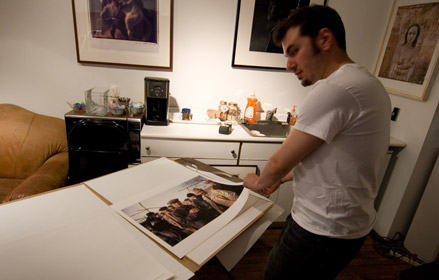
I picked up some big prints for a client today from Gabe Greenberg. Gabe runs the 20x24 Polaroid studio as well as a high end digital print service. I can't say enough good things about the entire experience of working with Gabe as a printer. His attention to detail and knowledge of digital process is top notch. I was very happy with the results.
You can see a small online version of the print shown right here.
April 12, 2005
Garry Winogrand's Leica
Photobugs will appreciate this:
August 20, 2004
Photostudios
Yesterday I found a shop selling digital copies of South African photo studio portraits:
Mai Mai – 251 Smith Street
The images reminded me of my own collection of photos from Tibetan photo studios:
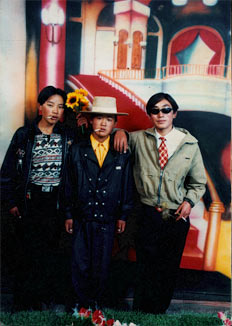
Colors magazine recently had an exellent series on similar photos.
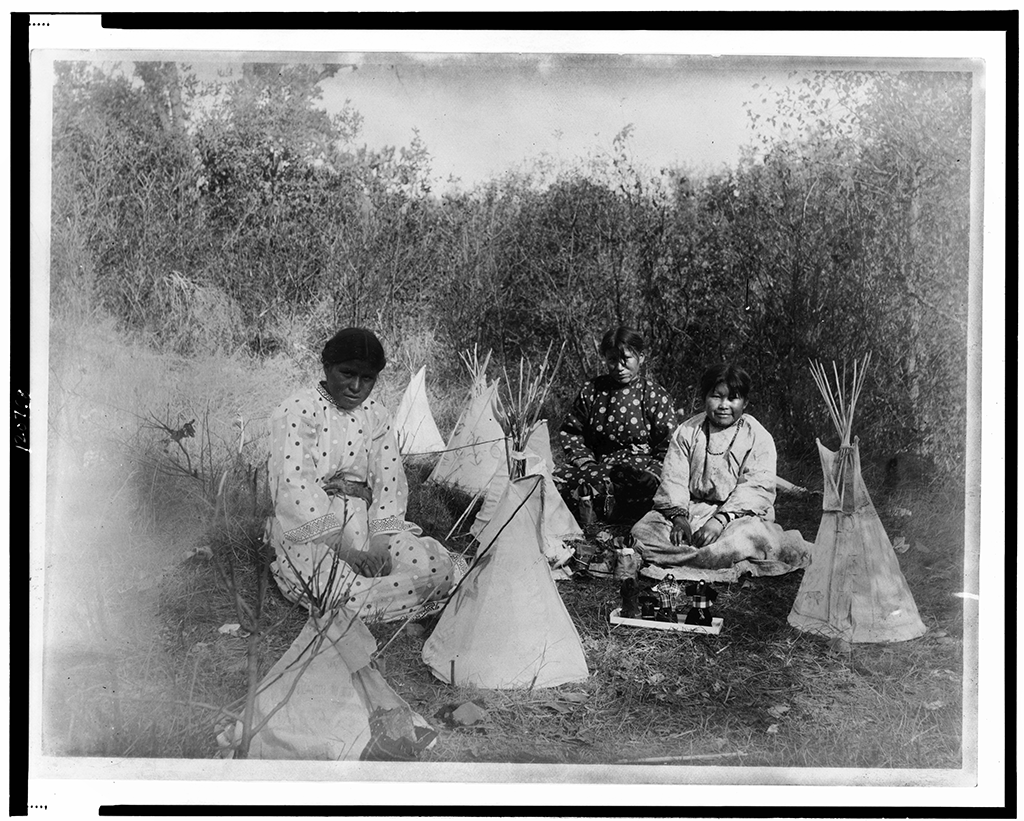
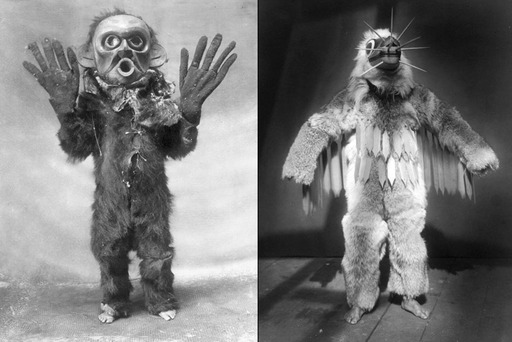
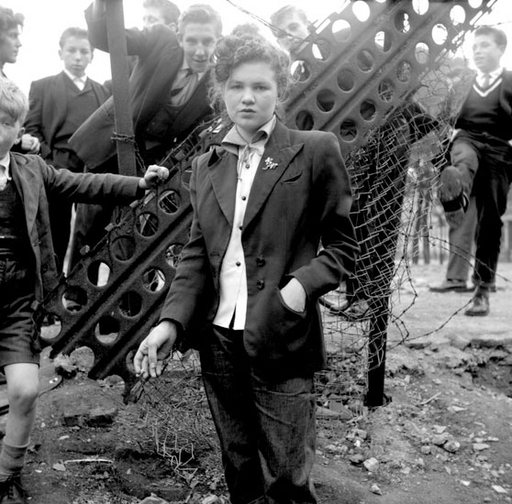
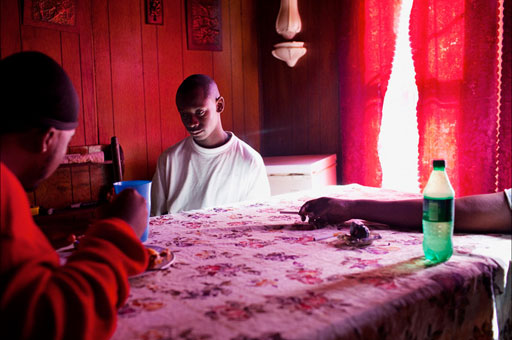
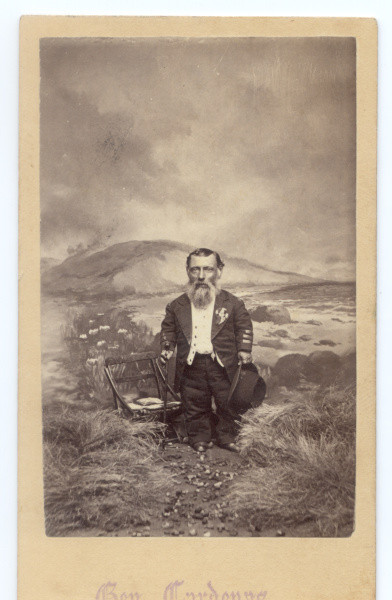
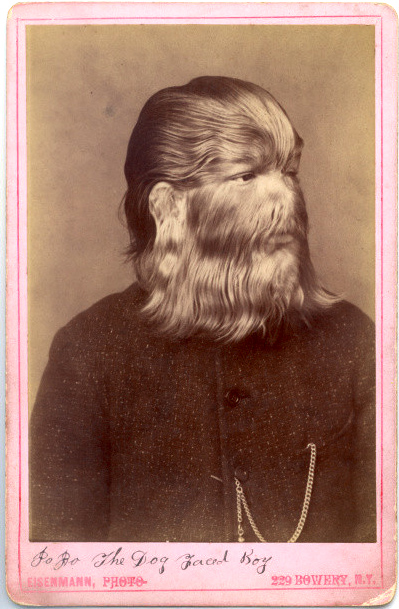
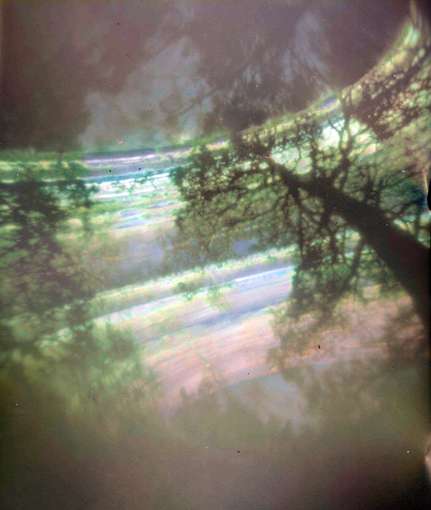
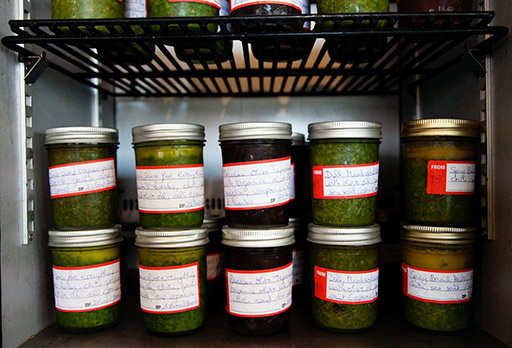
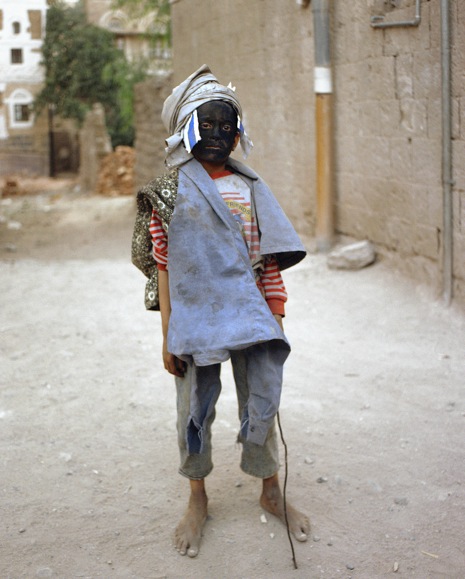
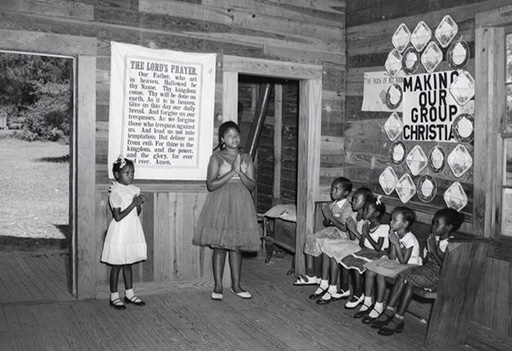
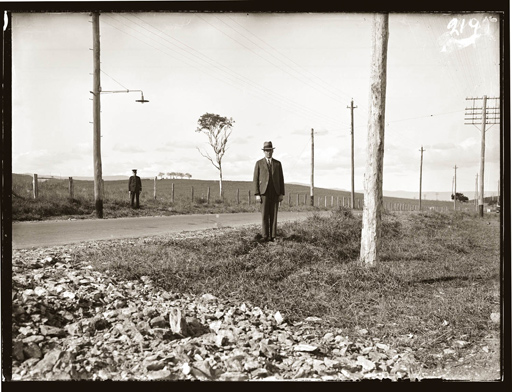
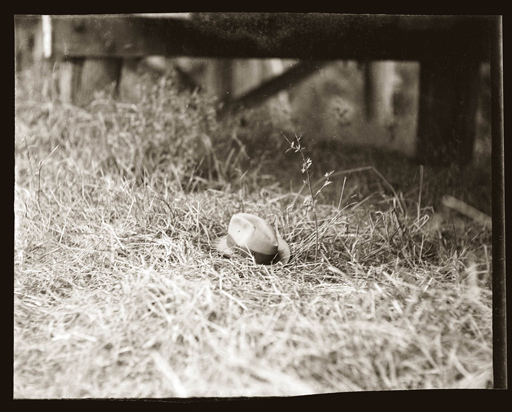
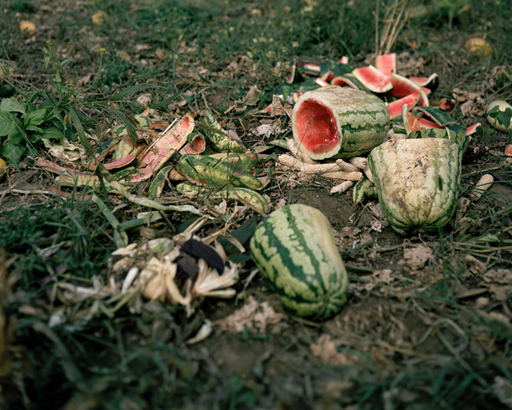
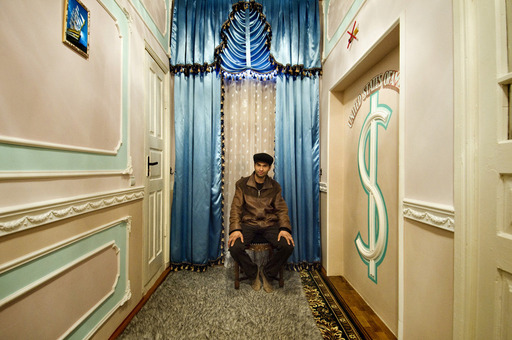
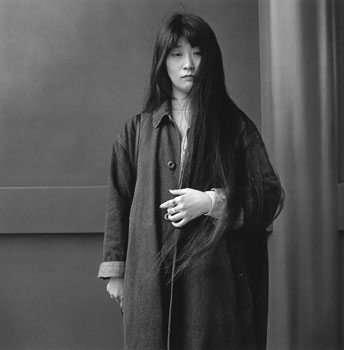
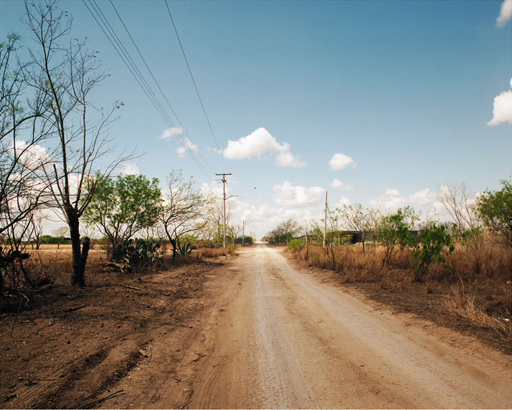
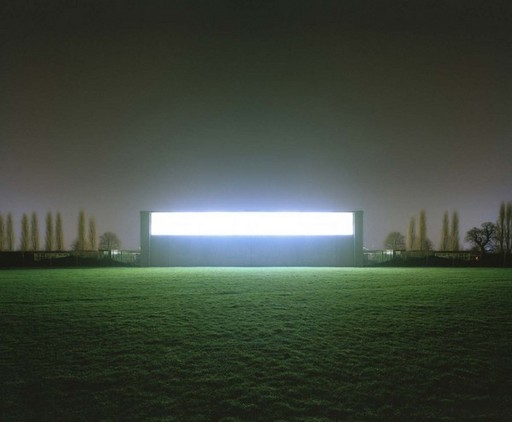
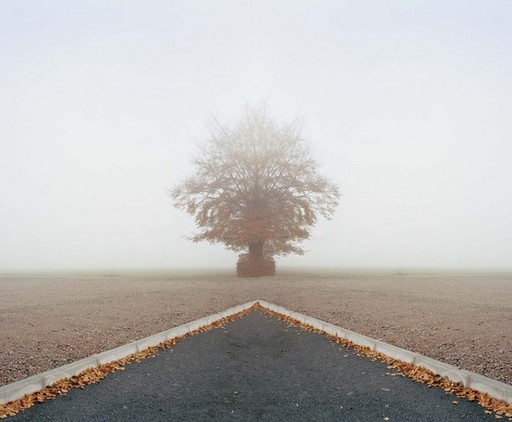
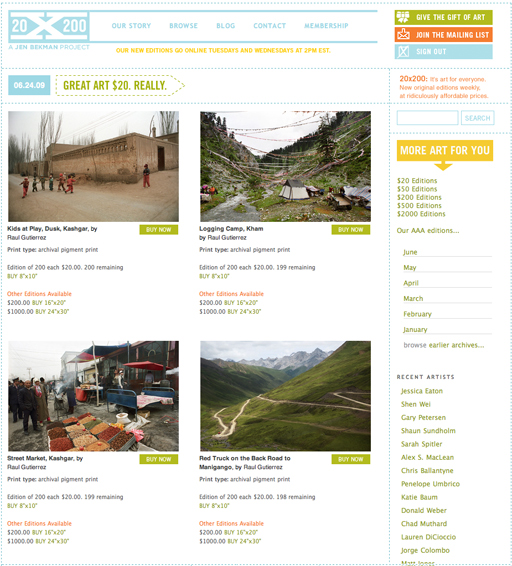
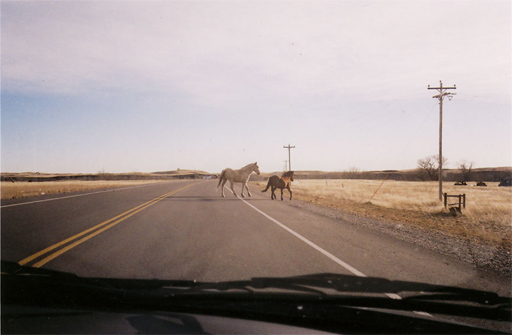
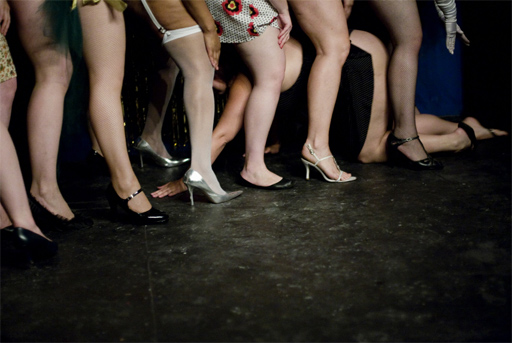
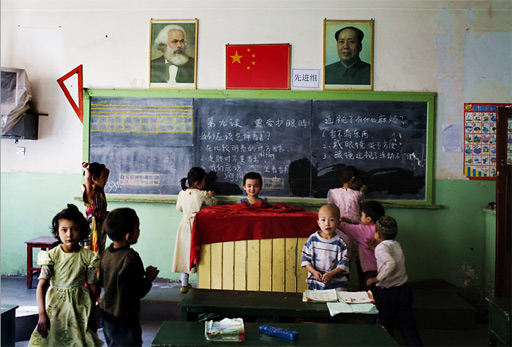
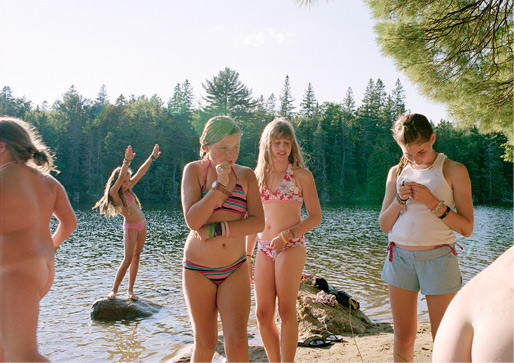
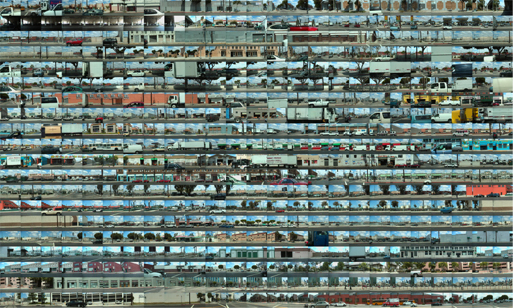
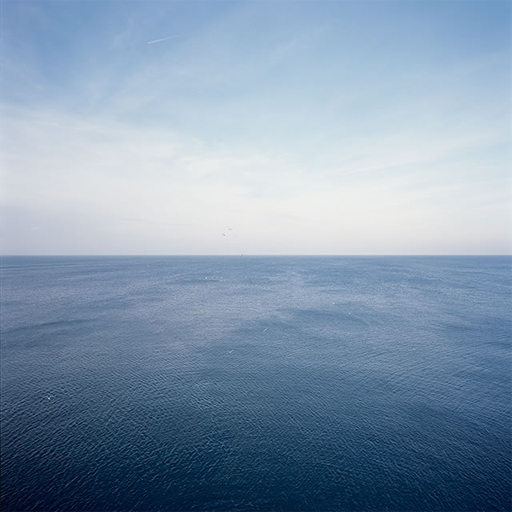
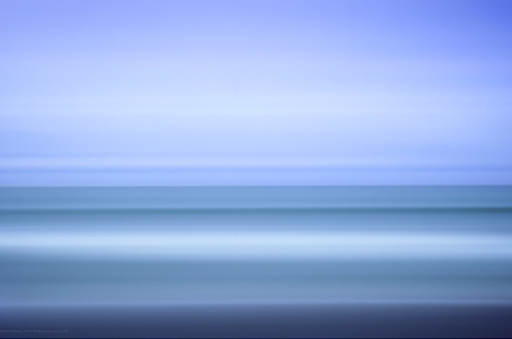
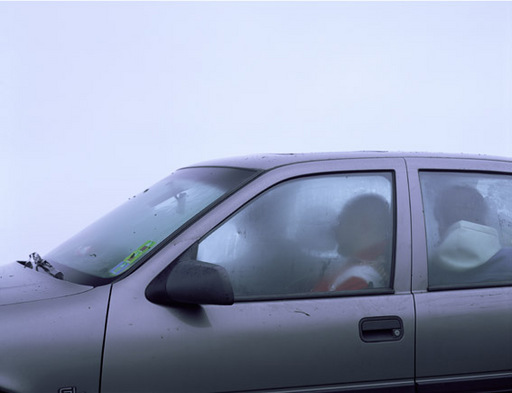
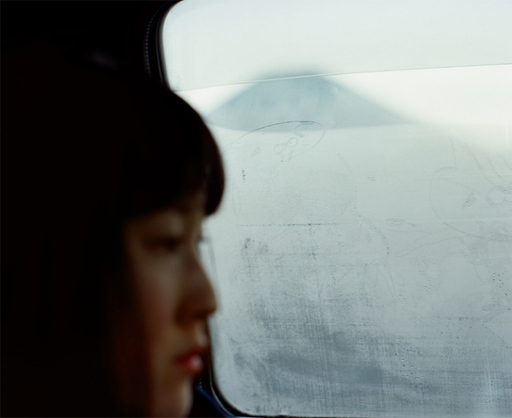 TetsuomiSukeda
TetsuomiSukeda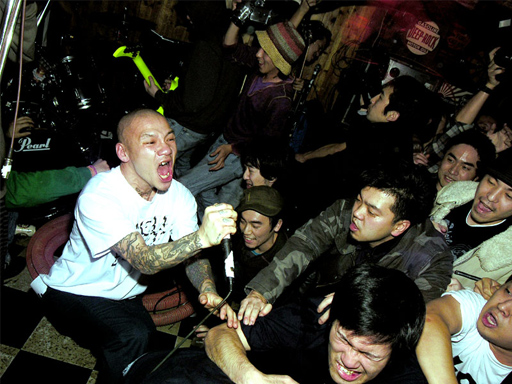 Okajimax S.Hondart
Okajimax S.Hondart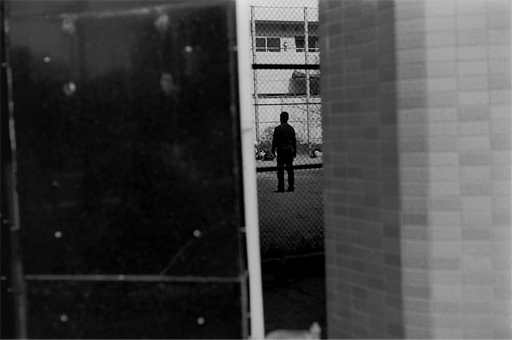
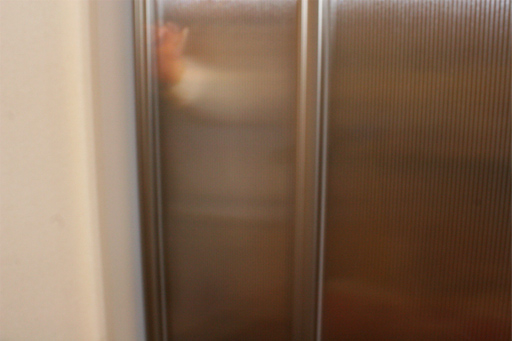 Koji Takiguchi
Koji Takiguchi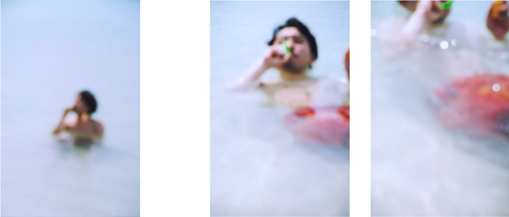 Ayao Nakamura
Ayao Nakamura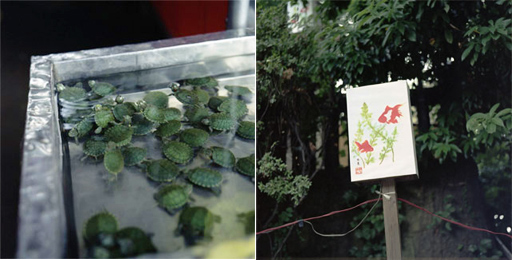 Sachiko Kawanabe
Sachiko Kawanabe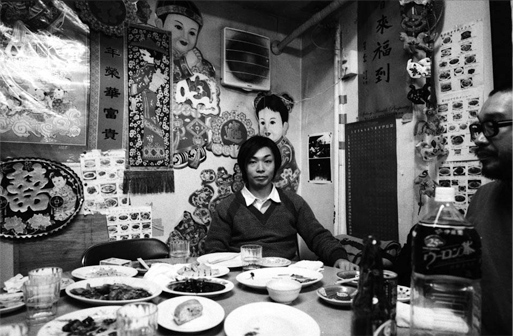 Yoshihisa Kajioka
Yoshihisa Kajioka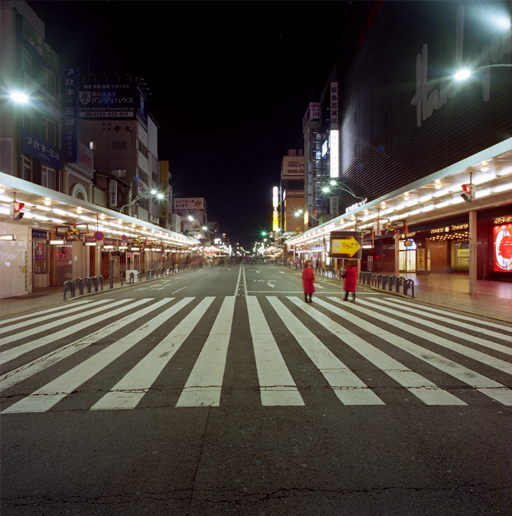
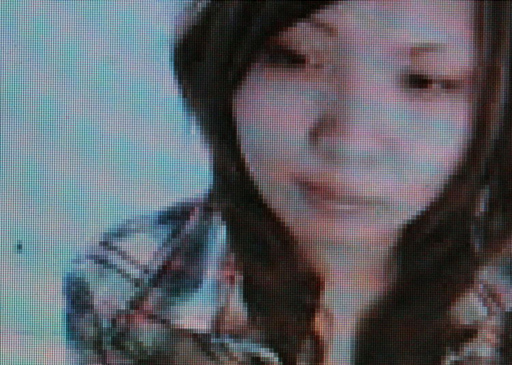 Atsushi Saito
Atsushi Saito